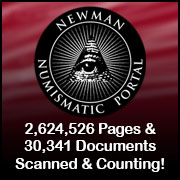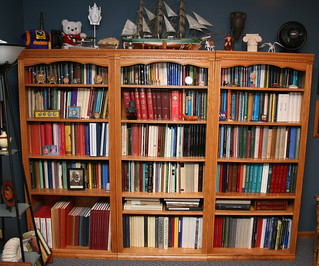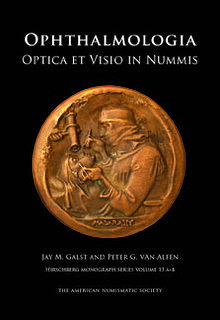
About UsThe Numismatic Bibliomania Society is a non-profit association devoted to the study and enjoyment of numismatic literature. For more information please see our web site at coinbooks.org SubscriptionsThose wishing to become new E-Sylum subscribers (or wishing to Unsubscribe) can go to the following web page link MembershipThere is a membership application available on the web site Membership Application To join, print the application and return it with your check to the address printed on the application. Print/Digital membership is $40 to addresses in the U.S., and $60 elsewhere. A digital-only membership is available for $25. For those without web access, write to: Charles Heck, Treasurer
AsylumFor Asylum mailing address changes and other membership questions, contact Chuck at this email address: treasurer@coinbooks.org SubmissionsTo submit items for publication in The E-Sylum, write to the Editor at this address: whomren@gmail.com BUY THE BOOK BEFORE THE COINSale Calendar
|
- WAYNE'S WORDS: THE E-SYLUM APRIL 12, 2020
- TELL US ABOUT YOUR NUMISMATIC LIBRARY
- KOLBE & FANNING BUY OR BID SALE NUMBER 12
- KAHN OFFERS COIN BOOKS AND ALBUMS
- NEW BOOK: 1793-1795 LARGE CENT VARIETY GUIDE
- NEW BOOK: THE DISTINGUISHED SERVICE MEDAL
- NEW BOOK: PROMOTIONAL SHEET & TEST NOTES
- NEW BOOK: DOW JONES
- NEW BOOK: ALL THAT GLISTERS IS NOT GOLD
- IRENE ‘NEDDY' ALLEN (1928-2020)
- BERNTH AHLSTROM (1936-2019)
- JAY M. GALST (1950-2020)
- ELDERT AUGUST BONTEKOE II (1954-2020)
- NEWMAN PORTAL ACTIVE DURING COVID-19
- MORE ON THE BANK OF NEW YORK FUGIO CENT HOARD
- VIDEO: COLOR SCALE FOR TONED MORGAN DOLLARS
- HARVEY STACK ON REED HAWN AND BRENT POGUE
- CORONAVIRUS UPDATES: APRIL 12, 2020
- NOTES FROM E-SYLUM READERS: APRIL 12, 2020
- THOUGHTS ON ERIC HODGE'S ILLEGIBLE WORD
- QUIZ: NUMISMATIC MYSTERY ADDRESSES
- ANS VIDEO CONFERENCE: COMPUTER-AIDED DIE STUDY
- VOCABULARY TERM: LACQUER
- ERNEST HACK (1889-1971)
- HARVEY STACK'S NUMISMATIC FAMILY, PART 67
- DR. RIDDELL: THE MELTER AND THE PLAGUES
- ANA CANCELS 2020 SUMMER SEMINAR
- SUMMER 2020 ANA MONEY TALKS SPEAKERS WANTED
- SUMMER 2020 ANA EXHIBITS WANTED
- PNG CALLS FOR 2020 AWARDS NOMINATIONS
- THE ELUSIVE NEW ENGLAND COUNTERMARK
- CLASSICAL NUMISMATIC GROUP SALE 114 ANNOUNCED
- ROBINSON ANCIENT COIN SALE 112 SELECTIONS
- HOLABIRD APRIL 2020 SALES ANNOUNCED
- STACKS BOWERS APRIL 2020 MEDALS-ONLY SALE
- HERITAGE APRIL 2020 CURRENCY SALE SELECTIONS
- 30 PIECES OF SILVER
- SILVER PENNY OF EDWARD THE MARTYR
- COINS AND HEALTH
- 2020 MAUNDY CEREMONY CORONAVIRUS CANCELLATION
- ARUBA WINS IBNS 2019 BANK NOTE OF YEAR
- BAR PAYS EMPLOYEES WITH SOUVENIR BANKNOTES
- TIMOTHY MILLETT CARDS SITE LAUNCHED
- MILLENNIALS AND STAMP COLLECTING
Click here to access the complete archive
Click here to unsubscribe (scroll down)
To comment or submit articles, reply to whomren@gmail.com
Content presented in The E-Sylum is not necessarily researched or independently fact-checked, and views expressed do not necessarily represent those of the Numismatic Bibliomania Society.
WAYNE'S WORDS: THE E-SYLUM APRIL 12, 2020
 New subscribers this week include: Paul Spa, courtesy of Andrew Greatorex; Ingrid O'Neil, courtesy of Paul Bosco; Bill Allen, Robert Powers, and Peter Lenkoski.
Welcome aboard! We now have 6,120 subscribers.
New subscribers this week include: Paul Spa, courtesy of Andrew Greatorex; Ingrid O'Neil, courtesy of Paul Bosco; Bill Allen, Robert Powers, and Peter Lenkoski.
Welcome aboard! We now have 6,120 subscribers.
Thank you for reading The E-Sylum. If you enjoy it, please send me the email addresses of friends you think may enjoy it as well and I'll send them a subscription (but let me know if they are located in the European Union). Contact me at whomren@gmail.com anytime regarding your subscription, or questions, comments or suggestions about our content.
This week we open with a request from our print journal editor, two numismatic literature offerings, five new books, four obituaries, and updates from the Newman Numismatic Portal.
Other topics this week include test notes, dealers Neddy Allen, Bernth Ahlstrom, Eldert Bontekoe and Ernest Hack, collectors Reed Hawn and Brent Pogue, Dr. John Leonard Riddell of the New Orleans Mint, the Bank of New York Fugio Cent hoard, toned Morgan dollars, multiple auction sale previews, the cancelled 2020 Maundy ceremony, and the Banknote of the Year.
To learn more about Library of Coins albums, the Distinguished Service medal, Japanese coin dating, lacquer on medals, the U.S. Assay Commission, the elusive New England countermark, West Africa bracelet money, king Edward the Martyr, the Confederate Hotel, a numismatic-themed book by Stephen King, the Grand Bingelmeister, "Frankenstein" coins and the Half Dime Lunch Room, read on. Have a great week, everyone!
Wayne Homren
Editor, The E-Sylum
TELL US ABOUT YOUR NUMISMATIC LIBRARY
Maria Fanning is the editor of our print journal, The Asylum - the official publication of the Numismatic Bibliomania Society. Here's her call for contributions to the next issue. Please tell us about your numismatic library! -Editor
I hope you are safe at home and taking this time to enjoy your numismatic treasures. Why not share your library with other numismatic bibliophiles in the next issue of The Asylum?
The theme of the next issue will be "Evolution of a Numismatic Library." Think about how your library has grown and changed over the years. Has your original interest led you down a rabbit hole into other fascinating areas of study? Have your books spread into other rooms or have you built onto your home to house your ever-expanding collection?
Please share with us how your library is arranged and decorated with unusual numismatic art and ephemeral items, too. As always, please share lots of photos of your inner sanctum and treasures. Please send submissions to asylum@coinbooks.org by May 1 to be included.
Feel free to send in stories on any topic, as long as it involves numismatic literature—from scholarly articles to personal anecdotes. The Asylum thrives on contributions by NBS members, so the more variety of stories we have to share, the better.
Thank you in advance for your contributions!
Maria Fanning
Editor, The Asylum
For more information on the Numismatic Bibliomania Society, see:
https://www.coinbooks.org/
KOLBE & FANNING BUY OR BID SALE NUMBER 12
Numismatic Booksellers Kolbe & Fanning submitted this announcement of their twelfth "Buy or Bid Sale" which closes on April 20, 2020. Good luck, everyone! -Editor
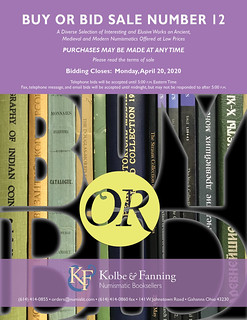 Buy or Bid #12 Begins Now
Buy or Bid #12 Begins Now
Kolbe & Fanning Numismatic Booksellers have announced our twelfth "Buy or Bid Sale," which begins now and will close on Monday, April 20, 2020. With hundreds of new additions,
the sale focuses on modestly priced books, giving collectors an opportunity to add to their libraries at minimal cost.
The sale includes over 1400 works on ancient, medieval and modern coins, as well as general works, periodicals and sale catalogues. "Buy" prices have been kept low to promote sales. To further encourage participation, the firm is offering free domestic shipping to bidders spending at least $300; there is also no packing and processing fee for this sale. Again, please read the Terms of Sale before participating.
As the name of the sale suggests, customers may bid on items they wish to acquire or buy them outright at the published price. The Terms of Sale will give full instructions on how to participate: please read it carefully.
There is no printed catalogue. The PDF catalogue is available now for downloading from the Kolbe & Fanning website at numislit.com. Please send all bids to orders@numislit.com or use the bid sheet included at the end of the PDF catalogue.
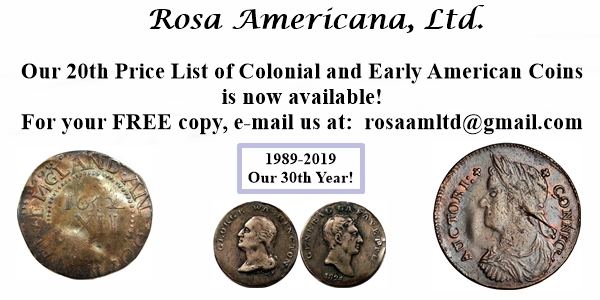
KAHN OFFERS COIN BOOKS AND ALBUMS

In his April 2020 News and Newps email newsletter David Kahn notes that they've added several coin books, Library of Coins albums and National coin boards to their site. One of the books (Robert Powers' variety guide to 1793-1795 Large Cents) was one I hadn't seen before, and I understand it's already out of print. Other offerings include standard references on early U.S. copper and silver coins. -Editor
Luckily, I had a good supply of coins in the pipeline. Thankfully, that allows us to post great newps on the website! Melissa and I have been busy doing just that. And, not just coins. We've been busy listing coin books (on the assumption that we all have a little more time on our hands these days...), and old coin albums, which are somewhat of a specialty here. Specifically, Library of Coins albums and National coin boards. Maybe you've been looking for a new area to collect? Library of Coins albums might be just perfect! It is a challenging series that you can work on for a good long time, and yet, a complete collection won't require taking a second mortgage. I completed my set about 15 years ago, and still look to upgrade when I can. But if you are really a completeness freak, you'll likely never be complete.
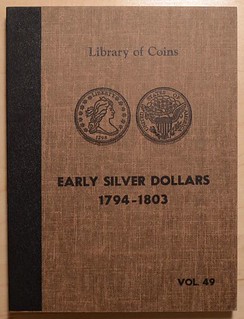

You see, the maker of these albums, The Coin and Currency Institute (owned by Robert Friedberg, of Paper Money of the United States book fame, later his brother Jack, and now Arthur, whom I presume is Jack's son) apparently ran them in limited printings, with publication dates ranging from 1958 through 1969 (though I seem to remember an occasional date in the 1970's...those notes are not handy right now). Years ago, my son and I started researching all the different print runs - we had amassed more than a thousand of these albums, and what else does one do with that many albums - with the idea of writing a book on the subject. There were subtle differences to be found among issues of the same volume number, and those details interested us. But inertia, helped along by the understanding that not very many folks would want to read our book, took its inevitable toll, and the project died. So I apologize that we didn't provide a reference book for you, but I promise, there are hundreds of variations to collect! If you don't find what you might be hunting for listed here, please drop us a note here. We have hundreds more.
For the full DKRC listings, see:
Numismatic Literature
(https://www.davidkahnrarecoins.com/inventory/numismatic-literature.html)
Library of Coins (https://www.davidkahnrarecoins.com/inventory/library-of-coins.html)
National Albums (https://www.davidkahnrarecoins.com/inventory/national-albums.html)
Luckily for collectors of albums David Lange's books are available. See the links below for more information. -Editor
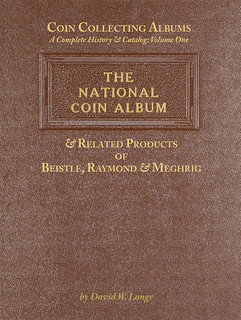
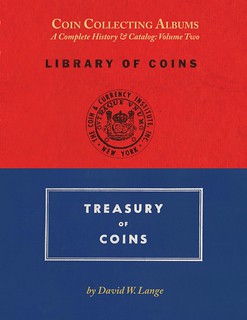
To read earlier E-Sylum articles, see:
NEW BOOK: COIN COLLECTING ALBUMS, VOLUME ONE (https://www.coinbooks.org/esylum_v16n32a02.html)
NEW BOOK: COIN COLLECTING ALBUMS, VOLUME TWO (https://www.coinbooks.org/esylum_v19n11a03.html)
To visit Dave Lange's web site, see:
http://www.coincollectingboards.com/
NEW BOOK: 1793-1795 LARGE CENT VARIETY GUIDE
As noted in the previous article, Robert Powers has published a new variety guide for 1793-1795 Large Cents. It's already out of print but David Kahn picked up some copies at the Atlanta ANA convention and has a few for sale. Here's some basic information from the book's first page. -Editor
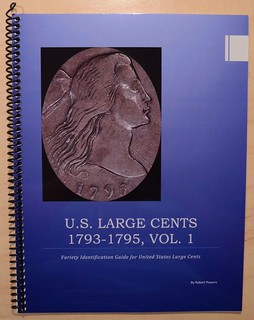 Welcome. You will want to read this page before you begin. It will help you to understand this guide.
Welcome. You will want to read this page before you begin. It will help you to understand this guide.
We will have you quickly and efficiently attributing 1793, 1794, and 1795 large cents in no time. The sole purpose of this guide is to help you rapidly identify the Sheldon number of any example you encounter at a coin show, on the internet, etc. Current census data, pricing information, and other information can easily be found online, or in the Penny Prices publication.
Attributing large cents may seem like a complicated business, but it doesn't have to be. Humans tend to be visual learners. Therefore, it is far more efficient to identify die varieties by simply looking at the coin rather than to read a long description which describes what is easier seen.
For example, the first things (key points) that you should look at when looking every large cent are the position of LIBERTY above the head, the date spacing and position, and the leaf positions on the reverse. You will then follow up by verifying that every other feature of the coin is in the correct position, shape, size, etc. Check all of your dentil alignments (that's a big one) relative to your letters and numbers in the date. Gather a mental picture. If you find yourself stumped, go through all of the die marriages looking for a reason that the coin in your hand cannot be that variety (ruling out, narrowing the list down). Are you following me? It won't be long before you begin to recognize varieties like you recognize someone's face. These "routine" observations need not be described in detail for each die marriage. In this guide, you will find that most descriptions will focus on unique or unusual features of a given die variety which could be overlooked during your "routine" mental picturing of the coin.
Please note that within this book, you will find coins pictured in which the obverse and reverse do not look like the same coin. This is simply because a better photo was available from a different die marriage that shares the same obverse or reverse die, and the pictures were put together as a "Frankenstein" coin. This will be especially helpful on the rare varieties, of which typically only very poor quality photos have been available in the past.
Although this volume covers 1793, 1794, and 1795's, we will be placing a special emphasis on the 1794, because it is far more challenging (and rewarding) to attribute, in most cases, than a '93 or '95. On the following four pages, you will find what is known as the "Crack Finder." If you can detect a die crack, you should be able to find it on the Crack Finder.

To order, see:
U.S.
Large Cent, 1793-1795, Vol. 1: Variety Identification Guide for United Stated Large Cents, by Robert Powers
(https://www.davidkahnrarecoins.com/catalog/product/view/id/1318/s/u-s-large-cent-1793-1795-vol-1-variety-identification-guide-for-united-stated-large-cents/category/122/)

NEW BOOK: THE DISTINGUISHED SERVICE MEDAL
SPINK published a new book by Simon Eyre on the Distinguished Service Medal. -Editor
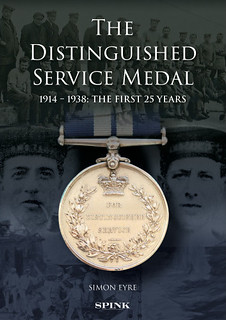 The Distinguished Service Medal 1914-1938: The First 25 Years
The Distinguished Service Medal 1914-1938: The First 25 Years
by Simon Eyre.
Hardback, 240 x 170mm
840 pages including colour plates
ISBN: 9781912667420
£60.00
The Distinguished Service Medal was the main gallantry medal given to naval ratings during the First World War, with over 4,000 medals being awarded. The citations for these awards are difficult to identify in surviving documents, which has meant that the reason why many of the awards were made has remained somewhat enigmatic.
For the first time this book documents all the surviving recommendations for these awards as well as providing analysis of the campaigns for which the awards were made. The posthumous recommendations for the medal and also details of the other awards made to DSM recipients are included to provide a definitive history of the medal during the First World War and the Interwar period.
To read the complete article, see:
The Distinguished Service Medal by Simon Eyre
(http://www.spinkbooks.com/index.php?route=product/product&path=59/&product_id=739)
NEW BOOK: PROMOTIONAL SHEET & TEST NOTES
Roland Rollins has published a new book on banknote company promotional sheets and test notes. -Editor
 North American Printers Promotional Sheet & Test Notes - American Bank Note Company to E.A. Wright Bank Note Company
North American Printers Promotional Sheet & Test Notes - American Bank Note Company to E.A. Wright Bank Note Company
Covers all test, advertising, promotional, color samples and house notes for firms involved in the production of bank notes. Spiral bound book, 198 pages, 113 known printers, 1000+ images, 1071 test notes from 1820 to date.
This catalog is a specialized book form of The Catalog of Printers' Test Notes, an eBook that covers all known printers of test notes worldwide. Bank note printing firms issuing test notes now include, printers, paper and substrate suppliers, ink suppliers, central banks, currency designers, and security foiling (holograms, Kinegrams, stamping foils) suppliers. There is a companion eBook catalog, covering what is called ATM test notes. Such cash management firms will appear in The Catalog of ATM Test Notes.
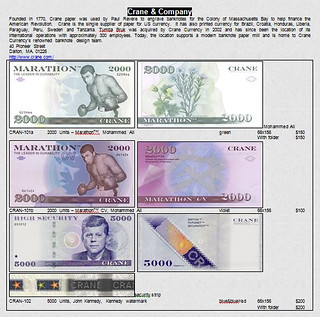 Cash management system firms issuing test notes now include ATM manufacturers, currency counters, banks and virtual banks providing ATMs, banknote readers, banknote
counters, dispensing machine manufacturers, system integrators, ATM service firms, ATM safe manufacturers, secure electronic financial transaction providers, ATM resellers,
counterfeit detection equipment manufacturers, currency strappers and currency disintegrator machine manufacturers and timed access cash controller equipment manufacturers.
Cash management system firms issuing test notes now include ATM manufacturers, currency counters, banks and virtual banks providing ATMs, banknote readers, banknote
counters, dispensing machine manufacturers, system integrators, ATM service firms, ATM safe manufacturers, secure electronic financial transaction providers, ATM resellers,
counterfeit detection equipment manufacturers, currency strappers and currency disintegrator machine manufacturers and timed access cash controller equipment manufacturers.
This catalog covers material produced by bank note, bond, and share companies. This includes the ancillary firms that produce security features or substrate material for the bank notes. Also included are design firms that may be used to create the bank notes.
The material included in the catalog includes the following.
- Test notes produced for large, international gatherings of currency collectors, dealers, and bank note issuing authorities. Often the latest test note from a firm is
shown and given away at currency related conferences throughout the year, including:
- Intergraf 2015 - Stockholm, Sweden
- Currency Industry Suppliers Exhibition (CIS). Their events are called Currency Conferences. 2015 Currency Conference – Vancouver, Canada
- High Security Printing Conference (Asia, Latin America, & Europe) – Reconnaissance
- Reconnaissance 2016 Mexico City, Mexico
- The Banknote Conference
- Interpol Conference
- International Bank Note Society annual meetings
- International Monetary Fund
- Watermark Conference
- Security Design Intaglio Printing Note Exhibition
- Color samples or color charts for prospective buyers. These are often originally bound together in booklet form, but often separated to be sold individually in the collectors' market.
- Advertising notes, printers' samples or salesman samples of banknotes, stocks, or bonds used to generate business by engravers, lithographers, and ink producers in the security printing industry. This includes sheets, usually called broadsides for "vintage" notes. If a firm was attempting to enter the banknote printing market, it is included. Vignette sheets with the firm's name are also included, this they are promotional in nature, vying for business. There are so many printers and advertising notes in the 1800s in North America due to every bank having the ability to produce its own bank notes.
- Calendars with vignettes and firm information are given to customers. Some have a new vignette each month; some have a cover vignette only.
- Demonstration notes and experimental notes are used as examples, sometimes for patents. They can also be used to test wear in different conditions.
- House notes are made for internal use to devise the proper mix of security elements. These are often also used as test notes at international gatherings.
- Promotional greeting cards are included when the company mentions their name. These can be with vignette or theme each month, bi- monthly, or only on the cover page.
- Promotional checks are included when the company lists the firm name.
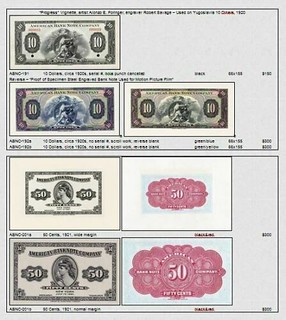
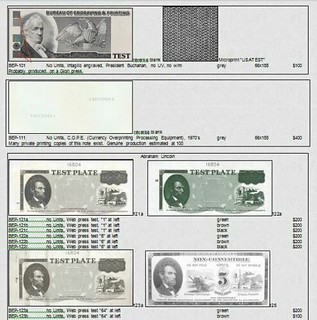
Note like material NOT covered in this catalog includes the following.
- Souvenir and Proof Cards, made by printing firms for marketing purposes and specifically for collectors. Examples include the U.S. Bureau of Engraving and Printing and
American Bank Note Company print cards for ANA meetings. This group is not included here since they are not test notes for the following reasons:
- Printed on cardstock, not paper.
- Souvenir Cards have engraved "note" only part of a larger cardstock.
- Often say "Souvenir Card" or "Souvenir Sheet" on the card.
- The engraving is a reproduction of an existing note or the reuse of the original plates.
The Souvenir Card Collectors Society has a thorough vetting of all North American cards.
- Advertising notes or promotional notes to market goods or services NOT related to bank note production. There already exists a catalog of American advertising notes – banknote look like paper ads for goods and services - "An Illustrated Catalog of Early North American Advertising Notes", by Robert A. Vlack. Only 15 of the hundreds of bank note printer, engraver, and lithographic advertising notes are listed in this 2001 catalog. The Vlack catalog does list 6,225 advertising notes of North America.
- Advertising stamps.
- Business cards are certainly promotional. These are small, usually with not vignettes. There does exist a need for a resource to attribute these, but are not included in this catalog.
- Single vignettes or vignette sheets without the producer's name are not included, even if the engraver is known. A set of these are promotional in nature, but without the firm's name cannot stand as an advertising sheet by itself.
- Local notes used for an event or place produced by a bank note printer. While these show the capabilities of the printer, they are not made as an advertisement for the printer.
- Trial or color trial notes are versions of actual notes, whether the sample was eventually used or not.
- Fantasy, essays, private printer, and most training notes.
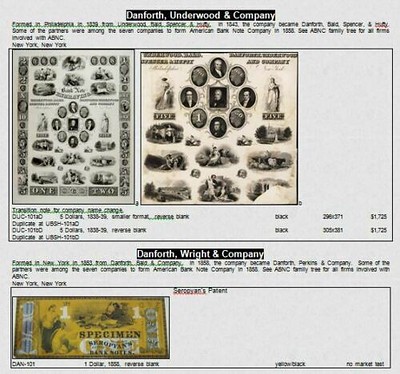
For more information, or to order, see:
Book - North American Printers Promotional Sheets & Test Notes, 198 pages, 2020 (https://www.ebay.com/itm/193281047619)
http://currency_den.tripod.com/testnotes/order.html
THE BOOK BAZARRE
NEW BOOK: DOW JONES
The International Bond & Share Society April 2020 newsletter announced a new book by one of their members. -Editor
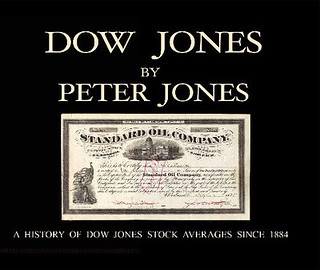 Once in a while an IBSS member sets up something that lasts - derived from his collection. We are glad that Peter Jones from Connecticut has done so with a book on the
Dow Jones Industrial Average. It tells the stories behind the first companies that formed the Dow Jones average in 1884. And the history of the companies that were included in the
index as it grew over the decades. The book has a hefty 350 pages, a hard cover and measures 28 x 21,6 cm (11 x 8.5 inches). It can be purchased from the author for 79 USD incl.
US shipping.
Once in a while an IBSS member sets up something that lasts - derived from his collection. We are glad that Peter Jones from Connecticut has done so with a book on the
Dow Jones Industrial Average. It tells the stories behind the first companies that formed the Dow Jones average in 1884. And the history of the companies that were included in the
index as it grew over the decades. The book has a hefty 350 pages, a hard cover and measures 28 x 21,6 cm (11 x 8.5 inches). It can be purchased from the author for 79 USD incl.
US shipping.
In the upcoming issues of our journal SCRIPOPHILY we will feature the book in depth and present some excerpts.
To buy a copy, please mail your name and address and a check for $79 (includes US mailing) to Peter Jones, Box 1, Windham Center, CT 06280. -Editor
For more information on the IBSS, see:
https://scripophily.org/
NEW BOOK: ALL THAT GLISTERS IS NOT GOLD
The Chico, California Enterprise-Record published a review by book columnist Dan Barnett about a numismatic-themed book by Stephen King. -Editor
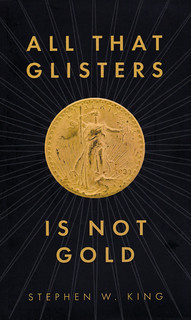 Stephen King's new novel is a numismatist's delight, to coin a phrase, but it's not from that Stephen King; it's from our Stephen King, "a thirty-three
year resident of Chico and a retired dean from CSU, Chico."
Stephen King's new novel is a numismatist's delight, to coin a phrase, but it's not from that Stephen King; it's from our Stephen King, "a thirty-three
year resident of Chico and a retired dean from CSU, Chico."
What's true: In 1907 the U.S. Mint began producing a stunning gold coin, designed by famed sculptor Augustus Saint-Gaudens. Versions were distributed through 1933 (almost a half million were produced in that year). The "double eagle," showing lady Liberty on one side, could be had for $20.
But then, early in 1933, in the midst of the Depression, everything changed. In order to stop the bank crisis by taking the country off the gold standard, President Franklin Roosevelt issued an executive order requiring those who held gold to return it to the banks. Most of the 1933 double eagles found their way back home, but some did not. Their value rose to astronomical heights, yet possessing a 1933 double eagle became a federal crime and remains so today.
Enter the novelist. "All That Glisters Is Not Gold" ($18.99 in paperback from FriesenPress, friesenpress.com; also for Amazon Kindle), by Stephen W. King, takes the reader to modern-day San Francisco and Lucas Bitterman, an accounting major and aspiring lawyer. At the death of his kindly grandfather, coin collector extraordinaire, Luke finds he has inherited a 1933 Saint-Gaudens Double Eagle.
"The coin needs legal help," Gramps had written to Luke, quoting the Shakespearean original "all that glisters" from The Merchant of Venice. Luke's coin is worth millions, coveted by international collectors and street thugs alike. And when word leaks out, Luke and his family are no longer safe.
Along the way the reader is plunged into the legal intricacies of "asset seizure" and the work of the Secret Service (it's not just to protect the president). King brings the Bitterman family to life as they try to figure out what to do with "the most beautiful coin ever minted in the United States or anywhere else." Keep it? Sell it? Donate it? How?
The ingenious resolution makes for a fun and satisfying read — unless you actually have a 1933 double eagle, which, dear collector, puts the "bitter" in Bitterman.
To read the complete article, see:
Collectible coin causes confusion in ‘All That
Glisters Is Not Gold' | Biblio File (https://www.chicoer.com/2020/04/08/collectible-coin-causes-confusion-in-all-that-glisters-is-not-gold-biblio-file/)
Here's some more information about the author from the publisher's site. -Editor
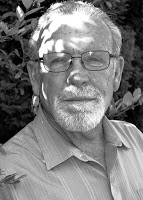 Stephen W. King is an author and retired university dean with a life-long interest in coin history and collecting. While this is his first fiction novel, he is the
author of several non-fiction books and articles including Communication and Social Influence and Speech Communication in Business and the Professions.
Stephen W. King is an author and retired university dean with a life-long interest in coin history and collecting. While this is his first fiction novel, he is the
author of several non-fiction books and articles including Communication and Social Influence and Speech Communication in Business and the Professions.
Born in San Francisco, he now lives with his wife of fifty-two years in Chico, California.
Perhaps an E-Sylum reader will review it with the eye of a numismatist. There's been plenty of nonfiction writing about these fabled coins - why not a novel? -Editor
For more information, or to order, see:
All That Glisters Is Not Gold
(https://books.friesenpress.com/store/title/119734000113292022/Stephen-W.-King-All-That-Glisters-Is-Not-Gold)
https://swkingbooks.com/

IRENE ‘NEDDY' ALLEN (1928-2020)
Christopher Eimer of London submitted this biography of medal dealer Neddy Allen, who sadly passed away in March. Thank you. -Editor
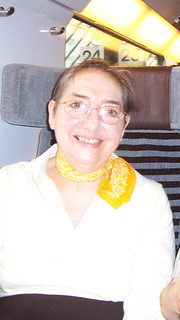 Neddy Allen began her career as a dealer in commemorative medals in the late 1960s, having been introduced to the subject by the late Peter Allen, whom she had married
twenty-five years earlier in 1953. It is said that they met at a restaurant in the City of London, where Neddy was waitressing and Peter was lunching; the introduction seamlessly
effected when her husband-to-be requested for dessert ‘steam pudding without the steam': upon such meaningful exchanges are marriages made!
Neddy Allen began her career as a dealer in commemorative medals in the late 1960s, having been introduced to the subject by the late Peter Allen, whom she had married
twenty-five years earlier in 1953. It is said that they met at a restaurant in the City of London, where Neddy was waitressing and Peter was lunching; the introduction seamlessly
effected when her husband-to-be requested for dessert ‘steam pudding without the steam': upon such meaningful exchanges are marriages made!
Though chiefly remembered by many as a specialist in Maundy money, Peter had also taken an interest in medals and was to communicate their artistic virtue and historical relevance to an enthusiastic Neddy, who took to the subject like a duck to water. This was a time when a City of London cased bronze medal could be had for £5; and while there may have been few takers at that price at the time, that series and many others were to form the backbone of her dealing activities.
With a warm-hearted and enthusiastic spirit, she established long lasting relationships with collectors and dealers alike over the following forty-five years. Clients from every part of the world would eagerly flock to her ground floor Dorset Square apartment in central London, where they would be greeted with unfailing courtesy: looking out upon the gentility of its Regency surroundings, the atmosphere of a salon was ideally suited to viewing the latest additions to her stock.
Without prior training or background, Neddy was to develop a remarkably intuitive eye for the aesthetic appeal of the medal; a finely tuned antennae alerting her to quality, interest and rarity. It reflected what was clearly a natural liking and enjoyment of the subject, which would make the blindness to which she suddenly succumbed, mercifully in the last few years of her life, a particularly cruel blow; though one that she confronted with admirable fortitude, if understandable frustration.
However, her intellect, sharply-attuned sense of humour, and the ability to laugh at her own situation, as well as those of others, would never leave her: that quick wittedness remaining as fresh and as sharp as it was fifty years earlier; and amongst the remarkable characteristics that provide a very warm and happy memory for those who knew her.
Paul Bosco writes:
"Neddy Allen stood out in part because she was a woman in a field with few others, but everyone knew she was the equal (or better) of any of the boys. Anyone who bought more than a few medallions from her must have a decent collection."
BERNTH AHLSTROM (1936-2019)
Paul J. Bosco submitted this nuanced remembrance of Swiss dealer Bernth Ahlstrom. Thanks! -Editor
Longtime dealer and auctioneer Bernth Ahlstrom, a giant in the world of coins, and a pariah as well, died on Christmas Day.
He began in business about 1954, but early on left the Swedish coin market to his brother Bjarn, often referred to as the "good Ahlstrom." Bernth established himself in Switzerland and also (in the early 1970's) in Manhattan. A major force in the industry, he once paid a world record price for a coin, a Constantine Rouble (Russia, 1825). This was in a MAIL BID (!!) Hans Schulman auction, right after James Kelly sold a 1913 nickel for $45,000. Ahlstrom told me the record price was real, and that the legendary American collector Irving Goodman was the underbidder.
In New York, Ahlstrom continued to conduct strong auctions, notably the Sawicki collection of Polish Coins & Medals --a sale also notable for its colonial Spanish-American offering.
Later Ahlstrom partnered with Alcedo Almanzar, operating an auction house in the 1980s, El Dorado. Significantly, it was sometimes called "El Diablo". It is believed Almanzar cheated his partner, likely making him the only person ever to get the drop on Ahlstrom
Ahlstrom was very smart and a very good numismatist, knowledgeable about all manner of numismatica, and the main players --collectors and dealers-- in multiple markets. In time, his dodgy record of paying debts eliminated him as a force in coin auctions, but he remained able to do business widely. Industry leaders, with whom he had done business for 50 years, often chose not to shun him. He also did business with persons best described as "soon-to-be-victims". A hard worker and constant traveler, he used his knowledge and his contacts to make money, and then would make more by stiffing people, including this writer.
Ahlstrom was more than just a devious hustler, having tremendous respect for Numismatics. He would buy and sell newly-published reference books on subjects that were not the most popular. After becoming a leading dealer in Olympics medals, he was a major contributor to an ANS exhibit.
Some anecdotes:
His Madison Avenue gallery, in the ultra-tony upper 70s, was having difficulty getting an inspector to approve some electrical work. He told his employee, Arthur Blumenthal, to give the inspector a few inexpensive proof sets ("for his children"). It worked.
Bernth was sitting near me at a Stack's auction, at which a 1792 Danish West Indies anti-slavery medal in white metal brought $10,000+. Bernth told me it was his medal, bought for $100 or so, maybe in Sweden.
Bill Christensen (Henry Christensen, Inc) told me, very roughly ca.1980, that "Bernth's checks are always good the second time."
H-J Schramm, whose career path somewhat mimic'd Ahlstrom's, told me in the 1990s, "After 35 years, I can no longer do business with Ahlstrom." I think the comment demonstrates what a long leash the coin business gave Bernth. Kind of like the way Hans Schulman was tolerated.
Ahlstrom himself once told me it didn't matter much, when bad things were said about him. "At this point, I've heard it all."
All in all, his was a remarkable, 65-years-plus career in the rare coin field. If I had to characterize it in a sentence, I would say his #1 talent was knowing how much, in every situation, he could get away with.
Regarding his name spelling, Paul adds:
"I believe Bernth is correct, but Berndt could be another form of the same name.
People used to ask if Hans Schulman was Jewish or Dutch. The answer was always, "whatever's selling." Bernth was, business-wise, as much German and French as Swedish.
"Ahlstrom" omits the "e" that is often used for the two dots over the "o"."
To read a CoinsWeekly article, see:
Berndt Ahlstroem (1936-2019) (https://coinsweekly.com/berndt-ahlstroem-1936-2019/)

JAY M. GALST (1950-2020)
 On Facebook April 12, 2020, Dr. Peter van Alfen of the American Numismatic Society posted:
On Facebook April 12, 2020, Dr. Peter van Alfen of the American Numismatic Society posted:
"Jay M. Galst. One of the hundreds of New Yorkers who died last night from COVID-19. Exceptionally good friend; generous beyond belief; a husband for 48 years; father; grandfather; co-author; ophthalmologist; numismatist; oenophile. Such a good, good man and always quick to smile. I am heartbroken."
Len Augsburger writes:
"Dr. Jay Galst, New York numismatist, passed away from COVID-19 on Saturday, April 11. A longtime member and past president of the New York Numismatic Club, Galst authored Ophthalmologia Optica et Visio in Nummis ?(American Numismatic Society, 2012), which cataloged over 1,700 numismatic objects related to the eye and the practice of ophthalmology.
Galst's numismatic collecting interests also included Judaica, but the occasional U.S.item did not escape his attention. In one case, he acquired an original plaster of a Walking Liberty half dollar pattern, which by sheer coincidence was owned by a neighbor. Galst was a graduate of the University of Wisconsin and the medical school of Columbia University."
So sorry to hear the news. Numismatic News published this photo of Galst at the 1,000th monthly meeting of the Bronx Coin Club on April 26, 2017. -Editor

Front Row: Normand Pépin, Joel Iskowitz, Jay Galst, David Menchell. Back Row: Jeremy Wallace, Snible and Thomas Tesoriero.
To read the complete article, see:
Bronx Coin Club marks 1,000 (https://www.numismaticnews.net/article/bronx-coin-club-marks-1000)
The 2008 Annual Report of the Royal College of Opthalmologists was illustrated with images of medals from Dr. Galst's collection. -Editor
The annual report features the commemorative medallions and plaquettes of some of the past great names in ophthalmology. The images of these medallions have kindly been provided by Dr Jay M. Galst. Dr Galst, an ophthalmologist from New York, is the world's authority on the subject and most of the images of the medallions are taken from his extensive collection.
To read the complete report, see:
The Royal College of Opthalmologists Annual Report
(https://www.rcophth.ac.uk/wp-content/uploads/2015/04/RCOphth-Annual-Report-2008.pdf)
Galst was a Past President of the Bronx Coin Club and New York Numismatic Club - his NYNC President's medal is pictured above. He was named a Numismatic Ambassador in 2014 and given an ANA Glenn Smedley Memorial Award in 2015. He was a sponsor of exhibits at Mashiko's Medialia Rack and Hamper Gallery and as noted, author of the 2012 book Ophthalmologia Optica et Visio in Nummis (Ophthalmology, Optics and Vision in Numismatics).
Here's a bio from the site of his medical practice. I added a photo from the site of the Cogan Ophthalmic History Society. -Editor
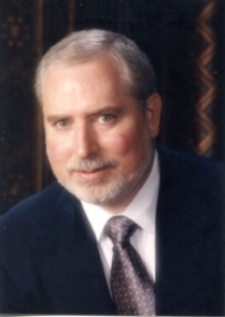 Dr. Galst specializes in general ophthalmology at our New York Omni Eye Services locations. He worked in comprehensive ophthalmology for over 20 years in private
practice before joining Omni Eye Surgery in 2016.
Dr. Galst specializes in general ophthalmology at our New York Omni Eye Services locations. He worked in comprehensive ophthalmology for over 20 years in private
practice before joining Omni Eye Surgery in 2016.
Dr. Galst was an inaugural board member of the General Service and Strabismus Service of the Ophthalmology Faculty Practice of New York Eye & Ear Infirmary. He has taught ophthalmology residents how to perform Strabismus surgery for 35 years and still teaches residents in the comprehensive ophthalmology clinics today.
Dr. Galst received his B.S. in Chemistry from the University of Wisconsin and graduated from the College of Physicians and Surgeons of Columbia University, NYC. He completed an externship in tropical diseases at St. Francis Hospital in Katete, Zambia, completed his internship at Columbia University's Overlook Hospital, Summit, NJ, and his residency in Ophthalmology at the New York Medical College, where he was named Chief Resident. Dr. Galst was also invited to the teaching faculty of the NY Medical College department of ophthalmology as assistant clinical professor and acting Director of Residency, where he became a Clinical Professor of Ophthalmology.
Dr. Galst was an attending Eye Surgeon at New York Eye & Ear Infirmary and served on the Jorge Buxton Service. He is Senior Attending Surgeon at New York Eye & Ear Infirmary and Clinical Professor of Ophthalmology at the Icahn School of Medicine of Mount Sinai.
To read the complete article, see:
Jay Galst, MD, FACS General Ophthalmologist (https://oomc.com/omni/about-us/our-doctors/)
To read earlier E-Sylum articles, see:
NEW BOOK: OPHTHALMOLOGIA OPTICA ET VISIO IN NUMMIS (https://www.coinbooks.org/esylum_v15n40a04.html)
BOOK REVIEW: OPHTHALMOLOGIA OPTICA ET VISIO IN NUMMIS (https://www.coinbooks.org/esylum_v16n39a04.html)
ELDERT AUGUST BONTEKOE II (1954-2020)
In an email to clients of Pegasi Numismatics, Nick Economopolous writes:
 "It is with great sadness that we announce the passing of my friend and longtime business partner Eldert Bontekoe. In recent years Eldert was diagnosed with a heart
condition, and ultimately that caused his death. Eldert was a big man, with a big heart. He was always willing to help fellow dealers as well as his friends and customers. Eldert
was passionate about our hobby and believed that it was important to educate our customers. He loved coins and antiquities, and his passion was evident to all. We spent 26 years
together as business partners, and I will miss him greatly. Our hobby has lost a dear friend and a good man.
"It is with great sadness that we announce the passing of my friend and longtime business partner Eldert Bontekoe. In recent years Eldert was diagnosed with a heart
condition, and ultimately that caused his death. Eldert was a big man, with a big heart. He was always willing to help fellow dealers as well as his friends and customers. Eldert
was passionate about our hobby and believed that it was important to educate our customers. He loved coins and antiquities, and his passion was evident to all. We spent 26 years
together as business partners, and I will miss him greatly. Our hobby has lost a dear friend and a good man.
"Please continue to check our website for any updates. Our next Auction catalog will move forward as planned, posted at the end of the month. Eldert was particularly proud of the selection of coins that will be available in this upcoming auction!"
Jack Howes writes:
"Eldert was a great guy. You could not ask for a more honest or knowledgeable dealer. He was always willing to spend time talking even if you didn't buy much."
Kerry Wetterstrom writes:
"Eldert was a quiet, unassuming man, who loved his history and his coins. I was able to spend about an hour or so with him last November at the annual Michigan State Numismatic Society Convention, and he was looking forward to retirement and being a private collector again. At the recent New York International Numismatic Convention, he purchased several coins from our firm for his own collection, and his renewed passion for collecting coins was evident. This makes his untimely death even more sad.
"Eldert Bontekoe was a gentle giant in the ancient coin business, literally and figuratively, and he will be greatly missed by us all."
Shanna Schmidt writes:
"I can't remember the first time I met Eldert but it must have been at one of the coin shows I attended with my father before I was in the business. Eldert was quiet and if you didn't give him a chance you probably wouldn't know how nice he was. Over the years as I got to know him and Nick Economopolous I came to see another side of Eldert. A man with wisdom to share and generosity to give. When I first became an independent dealer I remember attending the NY International that January. I had literally just started on my own and had no inventory at all aside from the few coins I purchased while still collecting and some recent auction purchases. I went around to the dealers at the show to see if I could sell a few coins and introduce myself again as Shanna Schmidt Numismatics Inc and not simply Harlan Berk's daughter.
One of my first stops was Pegasi. Nick and Eldert showed me an incredible amount of compassion by looking through what I had, giving me advice on pricing (which I took and it holds true today!) and buying a few pieces. They could have shooed me away but they didn't and for this I will always be grateful. When Nick told me at the Atlanta National Money Show just recently that he would be going out on his own I was saddened to hear this. It clearly wasn't a decision that he made lightly since he and Eldert were a strong team. I suppose that the end was already in sight for Eldert and most likely for the well being of Pegasi they made this hard decision.
If someone asked Eldert if we were friends I'm sure he would've said not really but he has left an indelible mark on my experience in the coin business whether he knew it or not. I'm saddened by his passing during the COVID-19 crisis as we can not fully honor Eldert during this time of crisis. He will be sorely missed in the coin community."
To read a CoinsWeekly article, see:
Eldert Bontekoe (1954-2020) (https://coinsweekly.com/eldert-bontekoe-1954-2020/)
Thanks to Jack for passing the information along. Eldert's writings include the 1999 pamphlet 1000 AD : The end of the first millennium and the 1992 book (with Alex Malloy and others) Price guide to medieval coins in the Christian J. Thomsen Collection. Here's an excerpt from Eldert's online obituary. -Editor
Eldert was a published author, speaker, and a professional numismatist for over 40 years. He was a collector of history for as long as anyone can remember. He achieved the level of Eagle Scout in 1970. The same year he began his professional numismatic career, working part time for a local coin shop. In 1972, he graduated from Grosse Pointe North High School and he started his own business selling US, ancient and medieval coins. He graduated the University of Michigan in 1976 with a Baccalaureate degree in Mechanical Engineering. He immediately went on to become a program manager in Automobile Emissions and Fuel Economy for the EPA. He worked his way up to eventually retire from the EPA as the President of the Emission Compliance Consultants. While working for the EPA, he began building the company, many of us know him for, Pegasi Numismatics, which was launched in 1982. He partnered with Nick Economopolous in 1994 to establish the Pegasi Numismatics that is known around the world and still successfully running to this day.
Eldert had many interests other than coin collecting. He had a profound love of poker. He enjoyed taking trips to Vegas and other casinos around Michigan where he could be found at the poker table! He loved playing the game, but anyone who has had the pleasure of talking with him would know that he always joked about having bad luck! He travelled to many places around the world often seeking a concert, play or museum along the way.
Eldert enjoyed spending time with his family. He loved gathering for holidays and spending the day at the family cottage. He is survived by a brother, Paul Bontekoe (Susan) and sister, Leslie Michalzuk (Ken). He was very proud of his nephews/niece and great nephews/niece as well: Jaime Bontekoe (Lily, Isaac August), Jessica Dinda (David), Kenneth Michalzuk (Lauren Donovan) and Kevin Michalzuk (Amanda; Henry).
To read the complete obituary, see:
Eldert August Bontekoe March 21, 1954 - March 30, 2020
(https://www.tributearchive.com/obituaries/12609531/Eldert-Bontekoe)
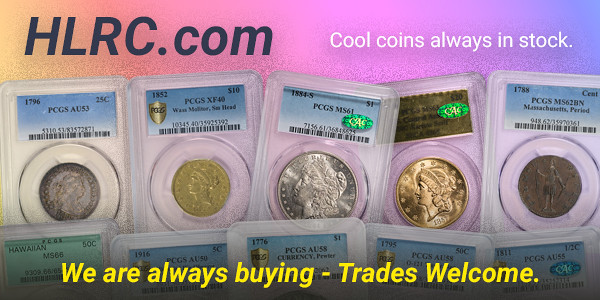
NEWMAN PORTAL ACTIVE DURING COVID-19
Newman Numismatic Portal Project Coordinator Len Augsburger provided the following report on project activities amid the coronavirus situation. Thanks. -Editor
Newman Numismatic Portal Remains Active During COVID-19 Epidemic
 Like most of the country, Newman Portal (nnp.wustl.edu) has transitioned to "all remote" status, with Newman Portal staff now completely working from home. Scanning
operations are on hold, as our multiple scanning centers (Washington University in St. Louis, the American Numismatic Society in New York, and various National Archives locations)
are all closed for non-essential operations. However, site additions and updates remain healthy, with a variety of new content being added electronically. While the current
circumstances are grim in human and economic terms, the concept of making information broadly available electronically remains our defining rationale.
Like most of the country, Newman Portal (nnp.wustl.edu) has transitioned to "all remote" status, with Newman Portal staff now completely working from home. Scanning
operations are on hold, as our multiple scanning centers (Washington University in St. Louis, the American Numismatic Society in New York, and various National Archives locations)
are all closed for non-essential operations. However, site additions and updates remain healthy, with a variety of new content being added electronically. While the current
circumstances are grim in human and economic terms, the concept of making information broadly available electronically remains our defining rationale.
In the meantime, we continue to accept electronic contributions, which may be directed to Len Augsburger at leonard.augsbuger@wustl.edu. Recent contributors include Q. David Bowers, David Lisot, and Lianna Spurrier. You might have old photographs to share or works you have published and wish to make available on Newman Portal. Much of our collection has been built electronically since the public launch of the site in 2016, and this trend will continue. One recent electronic addition is the Official Register of the United States, built from public domain sources and incorporated into NNP. This resource (https://nnp.wustl.edu/library/publisherdetail/536877), published serially from 1816-1959, provides lists of U.S. Mint and Bureau of Engraving and Printing employees found nowhere else in consolidated form.
We encourage publishers to consider Newman Portal as a potential outlet. We've already heard from one coin club that has committed to making their next print issue freely available online, as a response to the COVID-19 epidemic. We encourage other organizations to do likewise.
National Archive additions will continue at least through May, as our primary contributors (Roger Burdette and Nicole Fry) work through their backlog. Nicole Fry has been processing the U.S. Mint general correspondence series (National Archives record group 104, entry 1), with 185 of 203 volumes in this group currently completed. Along with contributions from R.W. Julian, Newman Portal has now scanned over 100,000 pages from this key National Archives series (https://nnp.wustl.edu/library/archivedetail/515202).
Internally, we've launched a historic newspapers project that extracts and transcribes numismatic articles from U.S. newspapers and journals, primarily from the 18th and 19th century. Although not yet posted on the site, this database is growing daily and remains the primary focus of NNP staff member Kelli West at Washington University in St. Louis. If you have old articles at hand, or even just citations, feel free to submit them.
At the American Numismatic Society (ANS), Lara Jacobs has been working through the business correspondence of Philadelphia dealers S. H. & H. Chapman, c. 1880-1935. This numbers thousands of letters and cards, which are processed through the letter R. Although this work is on hold, we anticipate a rapid conclusion to this project when the ANS reopens.
We encourage everyone in the numismatic community to continue to follow national directives to help fight this epidemic. Many coin clubs have moved to virtual gatherings, with good success reported. We look forward to seeing everyone in person again, but, in the meantime, feel free to explore, utilize, and contribute to Newman Portal. As always, inquiries may be directed to me at leonard.augsburger@wustl.edu.
To visit the Newman Numismatic Portal, see:
https://nnp.wustl.edu/
MORE ON THE BANK OF NEW YORK FUGIO CENT HOARD
Newman Numismatic Portal Project Coordinator Len Augsburger also provided the following preview of a new acquisition. -Editor
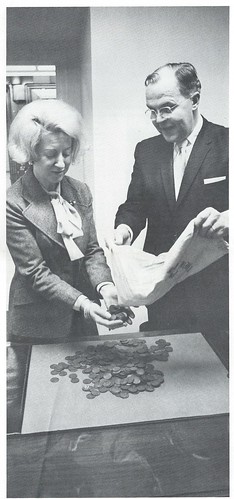 A Pirate's Pile of Fugios: Follow Up on the Bank of New York Fugio Cent Hoard
A Pirate's Pile of Fugios: Follow Up on the Bank of New York Fugio Cent Hoard
The Eric P. Newman research files constantly reveal pleasant surprises, such as this February 1977 issue of Bank One, a tabloid-size newspaper published for the staff of the Bank of New York. Such publications, intended for company-internal distribution only, were generally not saved and are elusive. This issue includes two attention-grabbing images depicting piles of Fugio cents. Clearly the coins were not handled with state of the art museum practices, but the allure of a large pile of highly collectible colonial coins is captivating.

Newman Portal will scan the entire article once we have access to our large format scanner. Thanks to Lianna Spurrier for processing these images, which were captured in parts.
Images: front cover and centerfold of the February, 1977 issue of Bank One.
A cringeworthy but still cool photo, like the silver dollar pour discussed last week. -Editor
To read the earlier E-Sylum article, see:
THE 1953 EMPEROR NORTON MEDALS (https://www.coinbooks.org/v23/esylum_v23n14a21.html)

VIDEO: COLOR SCALE FOR TONED MORGAN DOLLARS
These are selections from the David Lisot Video Library that feature news and personalities from the world of coin collecting. David has been attending coin conventions since
1972 and began videotaping in 1985. The Newman Numismatic Portal now lists all David's videos on their website at:
https://nnp.wustl.edu/library/multimediadetail/522852
Here's one on a color scale for toned Morgan dollars. -Editor
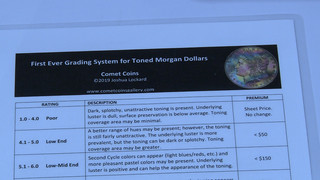 Joshua Lockard Devises Color Scale for Toned Morgan Dollars
Joshua Lockard Devises Color Scale for Toned Morgan Dollars
Joshua Lockard, Comet Coins, David Lisot, Interviewer, CoinTelevision.com.
Pricing and evaluating toned Morgan Dollars has always been a challenge for coin dealers. Numismatist and coin dealer Joshua Lockard has formulated a way to address this issue in a new report.
An excerpt of the video is available for viewing on the Coin Television YouTube Channel at:
https://youtu.be/Qol4QPSIuqo
HARVEY STACK ON REED HAWN AND BRENT POGUE
Harvey Stack submitted these additional thoughts inspired by his recent podcast interview about the Stack's former home in New York City. Thanks. -Editor
 I opened the April 5th issue of The E-Sylum and was very pleased to see that you featured as one of your first articles my story about "our home at 123 W
57th Street in New York.
I opened the April 5th issue of The E-Sylum and was very pleased to see that you featured as one of your first articles my story about "our home at 123 W
57th Street in New York.
Once I reheard my podcast which appeared in CoinWeek, I felt the deep loss of my "home away from home". Think of it, for the past 67 years it was my "home" almost seven days a week.
I hope that all your readers have their memories refreshed as mine were, and remember how important a landmark our shop and offices were to so many, and the warm feelings so many had each time they visited.
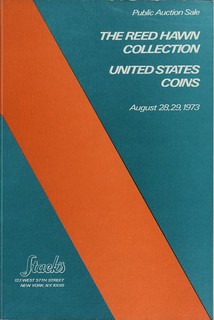


I got a very warm call today from Reed Hawn and he was reminiscing about his first visit to Stack's decades ago. He spoke of Brent Pogue who was From Dallas and Reed from Houston. They came at different times, decades ago, as young men, each with their fathers who brought them to Stack's for each to build their budding coin collections. Naturally They did not come together, but years apart, and we worked with each of them in establishing world class collections.
Reed built sections of his, sold them off when he got as far as he felt he could go, and then built other series in super quality. Stack's years ago sold each section as Reed went from one series to another. Each series established the Hawn collection as very outstanding.
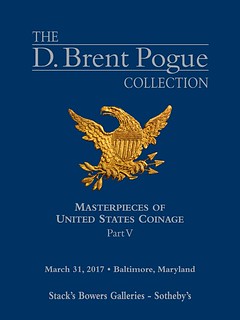 Stack's Bowers was awarded the Pogue collection for auction, which we sold in seven separate catalogs for a world record price of $135,000,000 !!!!!
Stack's Bowers was awarded the Pogue collection for auction, which we sold in seven separate catalogs for a world record price of $135,000,000 !!!!!
Both collections were started at Stack's and sold by Stack's (and Stack's Bowers).
The story from Reed was an emotional one for me, and also Larry, who helped Us serve both collectors, and the pride we enjoyed having done what we did.
Others have called or written to me about "my memories" and those they had by having the Stack family help them, welcome them,and make their collections important in the various fields they collected.
I want to thank you, CoinWeek, and all of those who heard the podcast for allowing me to express myself. Thank you again for spreading my "Growing Up" and "123 West 57th Street stories with all your readers.
Thanks, Harvey. Your stories help us all better understand the numismatic events of the past that shape the numismatic world today. -Editor
To read the earlier E-Sylum article, see:
AUDIO: STACK'S AT 57TH STREET (https://www.coinbooks.org/v23/esylum_v23n14a05.html)

CORONAVIRUS UPDATES: APRIL 12, 2020
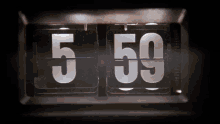 Well, here we are again. It's Groundhog Day. The alarm's gone off and Sonny and Cher are singing. Again. Here's another roundup of news about numismatics and
collecting in this strange netherworld of cancelled events, self-isolation, and energized online interactions. Like many of us, I'm getting a lot done in this period of time
at home while also having some time to relax. I feel like a dating site profile - "I like sleeping in, reading books, long walks, sunsets and red wine." Sorry ladies,
I'm taken.
Well, here we are again. It's Groundhog Day. The alarm's gone off and Sonny and Cher are singing. Again. Here's another roundup of news about numismatics and
collecting in this strange netherworld of cancelled events, self-isolation, and energized online interactions. Like many of us, I'm getting a lot done in this period of time
at home while also having some time to relax. I feel like a dating site profile - "I like sleeping in, reading books, long walks, sunsets and red wine." Sorry ladies,
I'm taken.
But another phrase popped into my head earlier this week. "Intensive scare unit". Nobody ever wants to be in the ICU or have a friend or family member who is, particularly in this unsettled time. It's hard to truly enjoy any activity when bad things are happening to good people everywhere, including friends in this great hobby of ours.
Yet somehow most of us will get through all of this. Wuhan, China and other cities hit earlier on are starting to reopen. And though these are some of the darkest days for places in the U.S. and elsewhere, the time will come when the cancellations stop and bit by bit life begins returning to normal. These reports will get slimmer before they get big again, hopefully with good news about businesses reopening and events being rescheduled. No one really knows how long it will take, but hang in there everyone, and keep us posted. -Editor
Lyon & Turnbull, Scotland (April 1, 2020)
While non-numismatic, this report I came across on Monday shows the general trend of success in moving the collectible business online during these times. Auctioneers Lyon & Turnbull held the firm's first sale using the ‘live online' format. The Decorative Arts sale was remarkably successful. -Editor
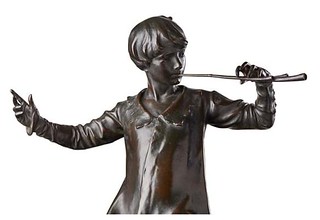 "Alone in the saleroom, managing director Gavin Strang stood for 12 hours on the rostrum, fielding bids via video-conferencing software from three online platforms
and phones operated by staff from home.
"Alone in the saleroom, managing director Gavin Strang stood for 12 hours on the rostrum, fielding bids via video-conferencing software from three online platforms
and phones operated by staff from home.
"Almost 1400 bidders registered online, with around 500 online absentee and 700 commission bids left before the sale. The selling rate across around 600 lots was 83% – above the norm for this sale category.
"It was certainly the longest time I have ever spent on the rostrum, but I'm not complaining" said Strang. "If there hadn't been so much bidding, I might have been finished in half the time.
"I'm glad we were able to trade in a way which allowed all our staff and customers to safely stay at home."
To read the complete article, see:
"The longest time
I have ever spent on the rostrum" – Lyon & Turnbull's live online sale delivers results
(https://www.antiquestradegazette.com/news/2020/the-longest-time-i-have-ever-spent-on-the-rostrum-lyon-and-turnbull-s-live-online-sale-delivers-results/)
Britain's Volunteer Army
This Washington Post article profiles the British government's "volunteer army" helping the National Health Service. -Editor
 When the British government asked people to help the National Health Service during the coronavirus crisis, it called for a "volunteer army." Within four days,
750,000 people had signed up — three times the original target and four times the size of the British armed forces.
When the British government asked people to help the National Health Service during the coronavirus crisis, it called for a "volunteer army." Within four days,
750,000 people had signed up — three times the original target and four times the size of the British armed forces.
Britain hasn't seen such a surge in volunteers since World War II, when the country pulled together in a way still remembered with immense pride. Now — with more than 60,000 people here having tested positive for the coronavirus, and with the prime minister among those who have been hospitalized — organizers are figuring out how to deploy the army, while individuals and companies are engaged in informal volunteer activities throughout the British Isles.
Michael Hayes, 55, is a taxi driver who joined the volunteer army and is awaiting his first official assignment. In the meantime, he spends about five hours a day driving NHS staff home, at no cost, from Newham University Hospital in East London, where his three children were born.
"Some of them come out, they've had dreadful days, the worst ... and they are walking out thinking, ‘I still got to get home,' I'm sort of like a little ray of sunshine," Hayes said. "They see me sitting there and I whiz them home."
They aren't involved in medical care. Another 12,000 former NHS workers said they would come back for that. Rather, the volunteers are supposed to help the elderly and others deemed especially vulnerable to the virus by doing such tasks as delivering groceries and medicine, driving people to appointments and conducting check-ins on those in self-isolation.
To read the complete article, see:
750,000
people volunteered to help Britain's NHS. Now they're being deployed.
(https://www.washingtonpost.com/world/europe/750000-people-volunteered-to-help-britains-nhs-now-theyre-being-deployed/2020/04/08/5a106766-729b-11ea-ad9b-254ec99993bc_story.html)
United States Mint (April 8, 2020)
In their April 2020 Coins Online Newsletter the United States Mint writes:
 "In our last issue, we were looking forward to springtime and the joys that come with it—longer, warmer days, basketball season's end and baseball's beginning, and
the ability to continue to offer a wonderful and diverse selection of our collector products. But quite suddenly, everything has changed—we're down to appreciating the warmer
weather, albeit from guarded distances.
"In our last issue, we were looking forward to springtime and the joys that come with it—longer, warmer days, basketball season's end and baseball's beginning, and
the ability to continue to offer a wonderful and diverse selection of our collector products. But quite suddenly, everything has changed—we're down to appreciating the warmer
weather, albeit from guarded distances.
"Today we face ongoing uncertainty regarding nearly every aspect of life as we know it. Not surprisingly, this includes the U.S. Mint's production facilities. We continue to produce our congressionally-mandated circulating coinage and bullion to support day-to-day commerce, but production of our numismatic products has been suspended for the time being."
They've got plenty of product in stock though. The note ends with "That said, we still have lots to offer—take a look!" followed by a "Shop Now" button. -Editor
Sixbid (April 9, 2020)
Sixbid Numismatic Auctions writes:
"This week we will inform you again about the current developments of the upcoming auctions. We will continue to notify you of changes and postponements in a box on the home page of our platform. Please also note the auction calendar, in which you can also find all postponements at a glance."
Among U.S. dealers, the Daniel Frank Sedwick Auction 27 is postponed to May 27-28, 2020. -Editor
To visit the SixBid auction calendar, see:
https://www.sixbid.com/en/auctions/calendar
Northeast Numismatics (April 9, 2020)
Tom Caldwell of Northeast Numismatics writes:
 "With us our online business has been doing quite well thru all of this. The challenge which we continue to make changes in is office time & how to do work
remotely. We have listings, images, sorting, shipping & other tasks happening at several different locations now. Of course it's different without any shows but
fortunately our retail in the mail is doing well. Folks have more time at home."
"With us our online business has been doing quite well thru all of this. The challenge which we continue to make changes in is office time & how to do work
remotely. We have listings, images, sorting, shipping & other tasks happening at several different locations now. Of course it's different without any shows but
fortunately our retail in the mail is doing well. Folks have more time at home."
To visit the Northeast Numismatics website, see:
https://www.northeastcoin.com/
To read the earlier E-Sylum article, see:
CORONAVIRUS UPDATES: APRIL 5, 2020 (https://www.coinbooks.org/v23/esylum_v23n14a16.html)
NOTES FROM E-SYLUM READERS: APRIL 12, 2020
Sam Alfano's Banjo Player Nickel
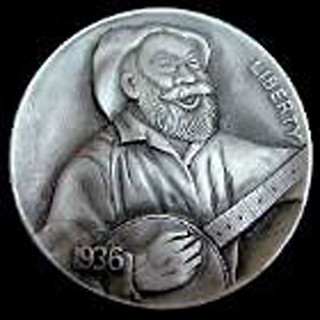 Banjo man Dave Schenkman writes:
Banjo man Dave Schenkman writes:
"I enjoyed reading about Sam Alfano. Here's a picture of a nickel in my collection (for obvious reasons) that he carved."
Nice. I like it. -Editor
To read the earlier E-Sylum article, see:
SAM ALFANO'S SHERLOCK HOLMES HOBO NICKEL (https://www.coinbooks.org/v23/esylum_v23n14a38.html)
Smithsonian Photo Identifications

Remember that Smithsonian photo where we were trying to identify everyone? We had IDs for all except the unknown woman in white in the background. I reached out to Smithsonian National Numismatic Collection Curator Ellen Feingold, who in turn put me in touch with Cory Gillilland, author of the 1992 book Sylloge of the United States Holdings in the National Numismatic Collection of the Smithsonian Institution, Vol. 1: Gold Coins, 1785-1834. She worked at the Smithsonian from 1965 to 1975 (the time of the photo) and again as Associate Curator of the NNC from 1983 until her retirement at the end of 1992. -Editor
Cory writes:
"That is me!"
So now we have it! Thanks to everyone for their participation and assistance. See the earlier article for our discussions on the others. Our caption is now:
Seated from left: Hans Schulman, Elvira Clain-Stefanelli, Carl Jaeschke
Standing: Dr. Vladimir Clain-Stefanelli
Background: Cory Gillilland
Seated at right: Charles Hoskins
-Editor
To read the earlier E-Sylum article, see:
NOTES FROM E-SYLUM READERS: FEBRUARY 16, 2020 : Smithsonian Photo Caption Summary
(https://www.coinbooks.org/v23/esylum_v23n07a14.html)
Researching the Acme Beer Token
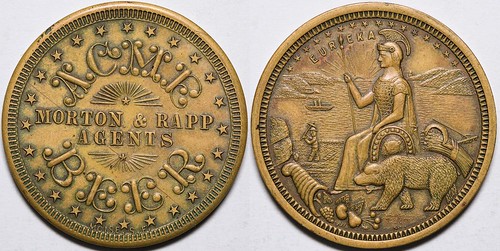
Michael Wehner of San Francisco writes:
"Jerry Schimmel, Bill Hyder and I have been researching the Acme Beer token and find it to be something of an enigma. The signature, "MOISE. S.F." is thought be a pre-Earthquake signature mainly in use from 1895 until the 1906 earthquake. It is possible that it was also used in 1906 and 1907 after the earthquake as well. San Francisco's Acme beer was established in 1907 by the Olympia Beer Company of Washington State, as most of the city's breweries had been destroyed in the earthquake and fire.
"John Rapp and Son appear in the San Francisco city directories as both an independent beer bottler and as a distributor of Rainier beer, a competitor of Olympia. They could be the Rapp on the token. However, no record of a Morton in the beer business nor a partnership between Morton and Rapp can be found in San Francisco newspapers or directories. Furthermore, the logotype on the token is quite unlike any found on bottle labels or advertising.
"Moise used a lot of different dies over the years for their many issues with the California State Seal, beginning with their so-called dollar for the 1894 California Midwinter Exposition (HK-245a). Bill's research finds that the 1910 Moise medal celebrating the 1910 California admission day celebration shows a die crack beginning on the seal between 9 and 10 o'clock. The Holabird specimen of the Acme token does not exhibit this crack, but others do, further confusing the timing of issue.
"Nonetheless, the particulars of Morton remain unknown as does the existence of a partnership with John Rapp and/or his son. Any assistance in identifying "Morton and Rapp" would be appreciated."
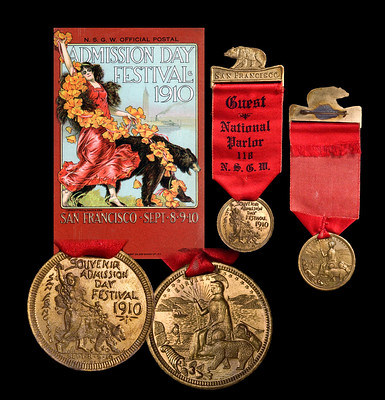
1910 San Francisco Admission Day medals

Can anyone help? -Editor
For more information on the Acme Brewing Company, see:
History of the Acme Brewing Company (1907-1954) (https://www.brewerygems.com/acme.htm)
To read the earlier E-Sylum article, see:
SELECTIONS FROM HOLABIRD APRIL 2020 SALES : Lot 4206: Acme Beer Token
(https://www.coinbooks.org/v23/esylum_v23n14a28.html)
1912 Chapman Earle Sale Participants Identified
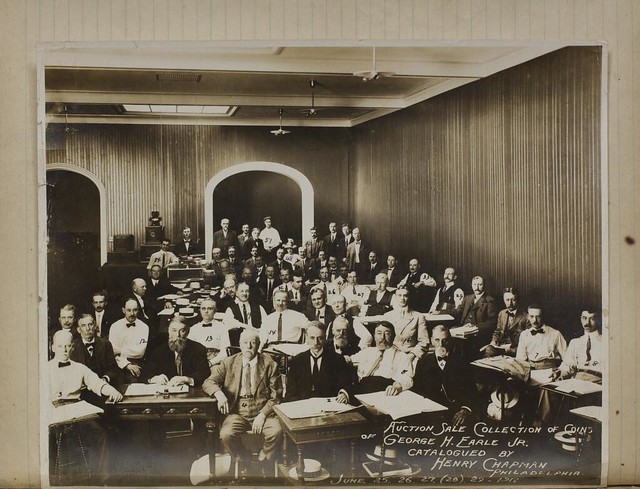
"Tony Terranova submitted the photo of the sale room at the Earle sale, a classic image. The copy of the Earle catalog at the Newman portal includes that same photograph immediately following the plates in the back of the catalog, with an inked number on each individual in the photo. Nearly everyone in the photo is identified in the key on the adjacent page. In addition to the names mentioned, others include Hesslein, Clapp, Valentine, Boyd, Ryder, and Newcomb. Many additional collectors are identified as well. The key includes 55 entries, with 42 of those identified, including a reporter and a couple employees."
Who could ask for anything more? That's fabulous. Thanks! -Editor
To read the full catalog on the Newman Portal, see:
CATALOGUE OF THE MAGNIFICENT COLLECTION OF ANCIENT GREEK AND ROMAN, EUROPEAN, ORIENTAL, EARLY
AMERICAN AND UNITED STATES COINS OF GEORGE H. EARLE, JR., ESQ., PHILADELPHIA. (https://nnp.wustl.edu/library/auctionlots?AucCoId=20&AuctionId=511094)
To read the earlier E-Sylum article, see:
QUERY: 1912 CHAPMAN EARLE SALE PHOTO CAPTION (https://www.coinbooks.org/v23/esylum_v23n14a14.html)
Japanese Coin Dates
Jeanette Violet writes:
"I have came across a Japanese 100 Yen that does not have a year marker. I first thought it was the new 2019-2020 coins. However then figured out that the markings on the coin do not match those on the newer coins. "
I reached out to E-Sylum reader Pabitra Saha who kindly forwarded this response. -Editor
Pabitra writes:
"The 43 refers to 43rd year of reign of Emperor Showa (or Hirohito). This pertains to 1968 AD. Japanese Emperors adopt a new name and the era pertains to that name. The current Emperor, Reiwa, started in 2019. The first year is counted as Inaugural year hence named differently."
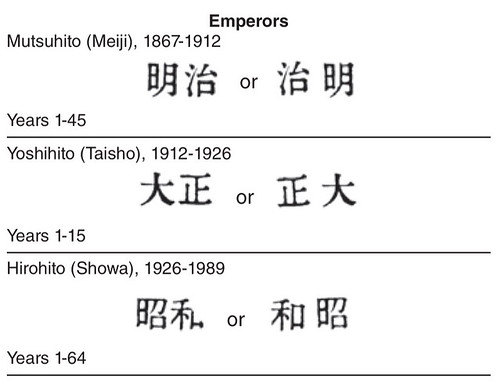


First year Reiwa era coins
Pabitra explained that on the first year of Akihito's reign (1989) the Japanese character for "first" was used in the date. Subsequent years use western numerals in the date. Here are Jeanette's coins with Pabitra's attributions. -Editor
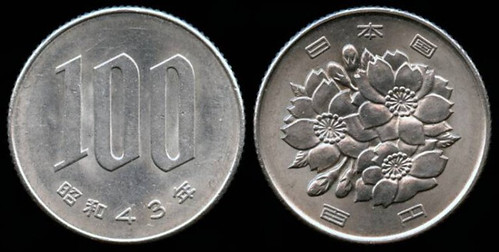
Hirohito (Showa) Year 43 = 1968
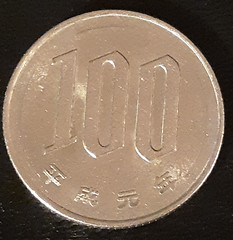
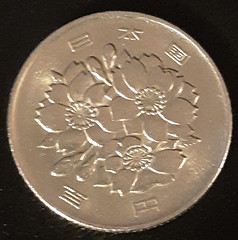
Akihito (Heisei) Year 1 = 1989
Grand Order of the West Knight Companion Medal
John Lumea of The Emperor Norton Trust writes:
 "The day after my "Artifactual" piece, I posted another piece — titled "Are You a Knight Companion of the Grand Order of the West?" — that adds
some new "dots" to this mysterious constellation.
"The day after my "Artifactual" piece, I posted another piece — titled "Are You a Knight Companion of the Grand Order of the West?" — that adds
some new "dots" to this mysterious constellation.
"In 2014, John Kraljevich sent in the images of his 1953 Emperor Norton medallion, featuring the phrase "Grand Order of the West," as a response to Neil Shafer's item about a souvenir "One Gold Crown" note, also produced in 1953 and also — like the medallion — carrying the name of the San Francisco Chronicle.
"The notes were given out by the thousands, primarily to children, at San Francisco's Thanksgiving Day parade that year, where the Grand Marshal was "Emperor Norton" — as played by an impersonator. Children could redeem the notes for single rides at Playland-on-the-Beach, a popular San Francisco amusement park of the day.
"Continuing to look for more info about the "Grand Order of the West," I found a December 2019 eBay listing with photographs of a wearable "chest medal" with the phrase "Grand Order of the West." The medal didn't carry the name of the San Francisco Chronicle — but, it did feature an image of Emperor Norton, and the Norton artwork was the same as on the Chronicle's "One Gold Crown" notes of 1953.
"More details, including photographs, are in the post and thread."
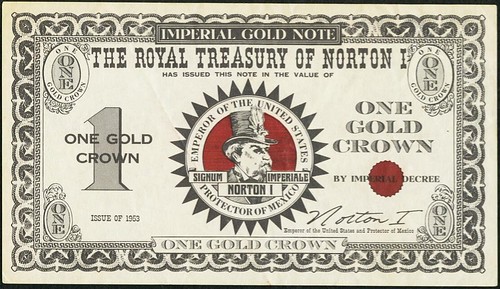
Thanks. The Emperor Norton legacy goes on and on. -Editor
To read the complete article, see:
ARE YOU A KNIGHT COMPANION OF THE GRAND ORDER OF THE WEST?
(https://www.facebook.com/EmperorNortonTrust/posts/2631070910505158)
To read the earlier E-Sylum article, see:
THE 1953 EMPEROR NORTON MEDALS (https://www.coinbooks.org/v23/esylum_v23n14a21.html)
More Numismatic Postcards

Paul Williams of Holabird Western Americana writes:
"I saw the bit about Weronika's coin postcards and remembered lots 4418-4428 in our April auction are all lots of these. Thanks for your great weekly publication."
Thanks. I noticed those too, but hadn't had time to mention them. -Editor
To read the lot descriptions, see:
https://www.icollector.com/auction.aspx?a=42417&as=64124&p=9&ps=50#i36576323
To read the earlier E-Sylum article, see:
NOTES FROM E-SYLUM READERS: MARCH 29, 2020 : Query: Numismatic Postcard Albums
(https://www.coinbooks.org/v23/esylum_v23n13a19.html)
Coin Laundering at the St. Francis Hotel
Paul Montz of Stephen Album Rare Coins writes:
"The articles on money sanitation reminded me of a story of a San Francisco hotel."
Thanks. We've covered this before, but it's a fun topic. -Editor
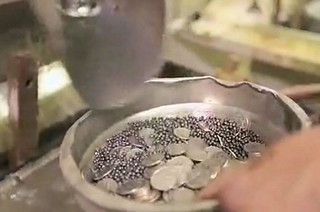 In a secret back room of a San Francisco hotel wired with fiber optic cable, one man still practices a tradition leftover from the 1930s: cleaning money.
In a secret back room of a San Francisco hotel wired with fiber optic cable, one man still practices a tradition leftover from the 1930s: cleaning money.
Rob Holsen is the coin washer at the Westin St. Francis Hotel, and perhaps the only coin washer on Earth.
He said the hotel on Union Square started washing its coins in 1934 when the general manager noticed a woman's white gloves getting dirty. Now, nearly 80 years later, the tradition somehow survives.
To read the complete article (and watch the video), see:
Coin Washer Cleans SF Hotel's Money
(https://www.nbcbayarea.com/news/local/coin-washer-cleans-sf-hotels-money/1899420/)
Money Laundering at the St. Francis Hotel
(https://www.neatorama.com/2017/04/24/Money-Laundering-at-the-St-Francis-Hotel/)
To read the earlier E-Sylum articles, see:
ARTICLE HIGHLIGHTS SAN FRANCISCO HOTEL'S MONEY LAUNDERER (https://www.coinbooks.org/esylum_v14n36a17.html)
NOTES FROM E-SYLUM READERS: SEPTEMBER 4, 2011 : Coin Laundering at the St. Francis Hotel
(https://www.coinbooks.org/esylum_v14n37a20.html)
GERMS AND MONEY (https://www.coinbooks.org/v23/esylum_v23n14a35.html)
HISTORY OF MONEY CLEANING (https://www.coinbooks.org/v23/esylum_v23n14a36.html)
The Half Dime Lunch Room
W. David Perkins of Centennial, CO writes:
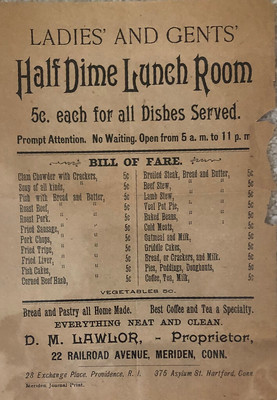 "In the March 22, 2020 issue of JR News I shared a menu from the "Half Dime Lunch Room" at 22 Railroad Avenue in Meriden, Connecticut. D. M. Lawlor was the
Proprietor. This same menu was also used in two other locations, 22 Exchange Place in Providence, RI and 375 Asylum Street in Hartford, Ct. Every item on the menu was 5C, or one
Half Dime. This menu was from the Stephen "Mr. Half Dime" Crain collection.
"In the March 22, 2020 issue of JR News I shared a menu from the "Half Dime Lunch Room" at 22 Railroad Avenue in Meriden, Connecticut. D. M. Lawlor was the
Proprietor. This same menu was also used in two other locations, 22 Exchange Place in Providence, RI and 375 Asylum Street in Hartford, Ct. Every item on the menu was 5C, or one
Half Dime. This menu was from the Stephen "Mr. Half Dime" Crain collection.
My primary intent was to share the fun menu where every item was 5C, likely in the late 1800s. I received nice feedback from a fair number of JRCS members and others. I also had one question from a reader on what year I thought this restaurant was in business. As no date was on the menu I replied, "I'm not sure."
I also requested that anyone with information on this restaurant please contact me. Not surprising to me, David Finkelstein, JRCS member and a longtime researcher, replied with four pages of information and ads for other Half Dime Lunch Rooms. And also "Dime" and "10 Cent" lunches / lunchrooms!
What David shared with me shows that Half Dime and Dime (10 Cents) restaurants went back to at least to the 1860's. It appears that Half Dime restaurants could be found over a dozen states in the 1870s. We can only imagine seeing all the Early, Capped Bust and Liberty Seated coins used to pay the tab or in change. Maybe even a Flowing Hair or Draped Bust coin occasionally were passed back and forth!"
Thanks. Perhaps one of the concession stands at the next ANA convention could be christened "The Half Dime Lunch Room" with reprinted menus at every table. Why not have some fun with it? -Editor

THOUGHTS ON ERIC HODGE'S ILLEGIBLE WORD
Three readers have three different opinions on the mystery word Eric Hodge asked about last week. -Editor

Prepunch
Ted Banning writes:
"With regard to Eric Hodge's illegible word, it looks to me like it might be 'prepunch'."
Presence
Roger Burdette writes:
"An old British English use of "presence" is a "view or likeness; appearance; in the manner or shape of."
"This seems to be the text Eric Hodge is working on."

Pressure
Martin Purdy writes:
"I'm pretty sure the obscure word is 'pressure' (with a long s - like an f - followed by a short one, of which there are other examples in the document). According to the full Oxford Dictionary, an obsolete meaning of 'pressure' is "impression", "image", or "stamp", which was still attested around 1800, so that would work here.
Bear in mind that what's quoted above isn't the full sentence - it continues on the next line, so should read "Altering the head of a punch and making a new pressure (i.e. impression) on the face of D° ("ditto", i.e. the punch) for defacing Dollars""

Thanks, everyone! If called on to be a tiebreaker I'd go with Martin's reasoning for 'pressure'. -Editor
Martin adds:
"The first two are plausible in terms of meaning but don't stack up when you follow the strokes on the page or match against other letters elsewhere in the document. (I'm not 100% insistent, but somewhere in the high 90s - if someone can document better matches to support something else, that would be great!) "
Eric Hodge writes:
"Firstly let me apologise for not quoting both lines, but I was just concentrating on the questionable word. I certainly like Roger's and Martin's ideas (whereas Ted's ending in an h does not seem to fit). Like you I would have to go with Martin. Certainly the double s seems accurate. I must admit that 'pressure' has been noted by me before, but what clinches Martin's idea is the old dictionary definition.
"I have checked online with Webster's Complete Dictionary for 1886 and on page 1032 pressure is given 6 definitions and ours is number 6, so am very pleased. My cup runneth over! As I said before I am in your debt. Now on to number 2 in my ‘to do' list! "

Roger adds:
"The isolated text looks as above.
"Mr. Purdy's interpretation, "Altering the head of a punch and making a new pressure (i.e. impression) on the face of D° (‘ditto', i.e. the punch) for defacing Dollars" is certainly satisfying. My interpretation, "Altering the head of a punch and making a new presence on the face of D° i.e. the head] for defacing Dollars" is also satisfying.
"Interpretation of the last word at upper right as "presence" depends on a defective spelling – with two "s" rather than one – and the final letters being "ence." Similarly, interpreting the same word as "pressure" depends on a normal spelling – with "ss" – and "ure" as the final letters. The latter requires that cursive "r" in the first syllable be nearly identical to cursive "r" in the second syllable. Enhancement of the original image indicates that the writer intended a cursive "r" in the second syllable and I concede that Mr. Purdy's word choice is most likely correct.
"I interpret the ditto position, directly below the word "head," as being consistent with contemporary usage and the concept of "ditto" meaning exactly what is above. Mr. Purdy take a looser approach an assumes the "ditto" applies to the word "punch" which is substantially offset from the ditto abbreviation. The difference between these alternatives is that Mr. Purdy's implies use of a new punch, and mine implies alteration of the face on an existing head. Given the phrase "altering the head" which begins the journal entry, I feel the latter understanding is what the author intended.
"How all this plays out for Mr. Hodge might better depend on a larger body of material and greater contextual clarity."
To read the earlier E-Sylum article, see:
DEFACING COUNTERMARKED COINS MYSTERY WORD (https://www.coinbooks.org/v23/esylum_v23n14a19.html)
QUIZ: NUMISMATIC MYSTERY ADDRESSES
Jim Neiswinter offers this quiz for U.S. numismatic shut-ins. Thanks. Who will be the first to get all three correct? -Editor
Jim writes:
"I've attached photos of three locations related to numismatics - two in New York City, one on Long Island. Try to figure out who owned these places.
The first was in the 1800s
The second in the 1900s
The third in the 2000s"

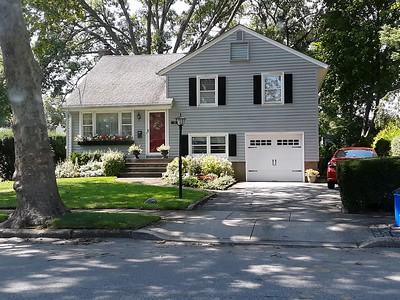
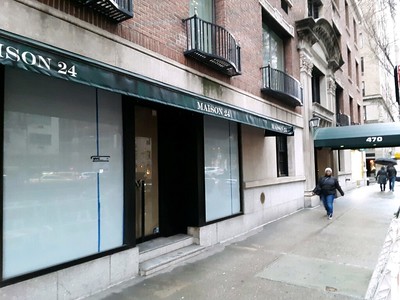

ANS VIDEO CONFERENCE: COMPUTER-AIDED DIE STUDY
For a potential glimpse of the numismatic future, American Numismatic Society members can tune in to the upcoming "Money Talks" video conference on computer-aided die studies. -Editor
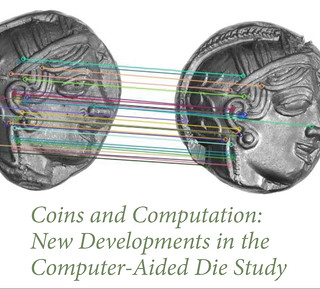 Coins and Computation: New Developments in the Computer-Aided Die Study
Coins and Computation: New Developments in the Computer-Aided Die Study
With Zachary Taylor and Dr. Peter van Alfen
Saturday, April 25
1:00 pm EST
This Money Talks will be held live via video conference. As with any Money Talks, you will be able to ask questions and hear responses in real time. The session is open to ANS members only. RSVP to Emma Pratte at membership@numismatics.org to get the link.
If you are not a member and would like to join, go to numismatics.org/membership to sign up!
Join Zachary Taylor from Trinity University and ANS Chief Curator Peter van Alfen for Coins and Computation: New Developments in the Computer-Aided Die Study. Die studies help numismatists learn about the ancient money supply, mint layout and manufacturing processes, and much more, but can be tedious and strenuous to conduct. The Computer-Aided Die Study (CADS) aims to solve this problem by automating a vast majority of the ‘busy work' in a die study, cutting the time needed for sorting and clustering by orders of magnitude. Zachary Taylor, who will be graduating this May with a degree in Computer Science from Trinity University (San Antonio, TX), undertook the development of CADS for his honors thesis and will present the preliminary and promising results in this Money Talks. He and Chief Curator Peter van Alfen will introduce and demonstrate the CADS tool, summarize the computer vision and clustering methods it uses, and finally suggest how CADS might be used to aid numismatists going forward.
Money Talks: Numismatic Conversations is supported by an ANS endowment fund generously given in honor of Mr. Vladimir Clain-Stefanelli and Mrs. Elvira Clain-Stefanelli.
To read the complete article, see:
Money Talks Coins and Computation: New Developments in the Computer-Aided Die Study
(http://numismatics.org/mt-computation/)
VOCABULARY TERM: LACQUER
Dick Johnson submitted this entry from his Encyclopedia of Coin and Medal Terminology. Thanks. -Editor
Lacquer. A spirit varnish or shellac, clear or colored, which when applied to a medallic surface: (1) gives protection, (2) adds reflective or matte finish, (3) adds any metallic color, and (4) prevents tarnish. A thin application – even a few thousandths of an inch – forms a tough, durable, coating. Lacquer is fast drying and when thoroughly dried it is impervious to a wide range of environments and chemicals, making it ideal for the protection of medallic items or even a coin.
Two types exist: natural lacquer (Japanese, Chinese varnishes) made from tree sap diluted and colored with pigments; and synthetic or artificial lacquer which have a variety of chemical bases (most popular are pyroxylin, resins, ester gum, cellulose acetate); these lacquers dry rapidly forming a hard, durable surface. Two other types also exist: air dry force dry lacquer and baked acrilic. All are forms of organic coating.
Lacquering is preferred for numismatic objects in contrast to the sculptural technique of surface metal protection of waxing, place a light coating of clear wax on the surface. However this has been done for art medals created in a medallist studio for the ease of preparation where a spray gun, and spray booth, are not available.
What needs to be lacquered. Metal items that have been formed and finished need to be lacquered to preserve the finish or patina that had been applied to their surface. Copper and bronze objects are the greatest candidates for lacquering because their surface is so unstable (look how fast a red cooper coin turns brown). Gold, at the opposite extreme, needs little lacquer at all because it is so inherently stable.
Bronze and silver art medals are lacquered for the reason to protect the surface that has been oxidized and relieved. The lacquer protects the color, the metal surface, and prevents undesirable tarnish and toning. Lacquering can also provide a gloss or satin finish.
How lacquer is applied. Formerly any item to be coated with lacquer was brushed on or dipped. Generally too much lacquer adheres to the object when either of these methods were used, thus the application by modern spray gun is far more desirable. A coating so thin it is imperceptible to the naked eye but thick enough for protection can be sprayed.
Even so, the amount of lacquer applied is a matter of personal taste, but too thick a coat becomes unsightly as it tends to build up in crevices and detail on numismatic items. A rule of thumb is thinner is better; two passes of the spray gun (one horizontal, one vertical) is sufficient.
Medallic items are laid out on wire racks large enough for a dozen or so medals to be placed. This is carried to a spray booth, laid flat inside on a turntable. After one pass of the spray gun is directed over the medals the turntable is rotated one-quarter turn. The second pass is made over the medals (this provides both vertical and horizontal spraying). A second wire rack is placed on top of the medals and with both hands holding the two racks tightly together, the operator brings these out of the spray booth, and flips them over (without, of course, spilling any of the medals).
Replaced in the spray booth, the top rack is removed and the second side is capable of being sprayed without humans ever having to touch the items. The wire rack containing the medals lacquered on both sides is then set aside to allow a thorough drying. Since this is usually a last step of production (unless the items must be suspended or fabricated in some other way), the wire rack is carried to the inspection table, after which the items are packaged.
Mechanical spray lacquering. Some medal makers have attempted to mechanize the step of lacquering since it is labor intensive. Equipment developed for the continuous flow spray processing of license plates has been adapted for medal production but this has not met with full success. The application of lacquer by a spray gun manned by a human operator is as much an artistic factor as the choice of patina color.
Lacquer as a coating. Once dried, lacquered objects become resistant to acids, alkalis, alcohol, and even heat up to 160° Centigrade (above this temperature, lacquer turns purple, then will strongly tarnish the item – firedamaged). Lacquered items are still protected with normal handling as the surface is impervious to perspiration and other contaminates found on the hands. Only when lacquered items are subjected to the strongest of solvents – as with benzene – will the lacquer be dissolved.
After medallic items have been lacquered they can be handled with human hands for all time, an important advantage of lacquering. The protected surface of art medals, for example, do not need to be embedded, encapsulated, housed in plastic, slabbed, or otherwise entombed. Lacquering provides this condition for touching and open display.
Lacquer as a reflective and coloring agent. Lacquer can change the reflectiveness or color of a finish, ranging from highly lustrous to a matte, from glossy to satin finish or less polished appearance. Pigments can be added to a clear lacquer to give a color tint to any item coated with that lacquer, as a gold tint lacquer can be sprayed on any item.
To achieve a matte surface the medallic item can be heated slightly and sprayed with a light coat of lacquer. Since the previous step is a complete drying of the metal surface, this is done under heat lamps. Thus it is ideal to spray immediately after removing from under the heat lamps. A minimum number of passes with the spray gun is necessary.
For a more glossy, more reflective appearance the number of spray passes is increased, a thicker coating of lacquer is applied. This will give gloss to the surface, heated or room temperature, as the lacquer becomes more visible.
Also, by adding bronze powders to lacquers a metallic finish can be applied. Despite the name, bronze powders can be added to lacquer to imitate any metallic color, as bronze powders can be made of any metal – even aluminum or brass – which, when sprayed on an item give it a gray or gold color.
Lacquer anomalies. Most problems with lacquer are derived from moisture. If moisture contaminates the lacquer and then sprayed on a medallic item, it may appear cloudy, called bloom in the art field. On the other hand if moisture is left on an object which is lacquered, a dark water stain will appear after about two year's time.
Undesirable lacquering occurs when too much lacquer has been applied. It tends to pool, or build up in the crevices and at the edges where relief meets the field in both the device and lettering. This is not pleasing to the human eye.
Lacquer refurbishing. If any lacquered medal is dirty, dusty or has some grime, it may be cleaned with dilute soap solution, rinsed with lukewarm water and patted dry with a soft cloth. Dried adhesive and other surface contaminates may be removed from lacquered medals with toulene (which does not disturb the lacquer coating, as stronger solvents would do).
If the lacquer has worn spots, or if the item has a water stain, or if patina anomalies are present (as wipe marks), or if the lacquer is cloudy, or it has been applied to thickly, to resolve any of these problems the lacquer may be removed – delacquered – with a solvent as benzene. Then any patina work can be done; the object is completely dried (even baked to remove all unwanted moisture), then the object relacquered, sprayed with a new lacquer coating. This is done in most every case of refinishing.
Original lacquer. There is absolutely no way of knowing if an existing lacquer is original – the first lacquer applied by the item's maker. There is no reason to retain any lacquer on a medallic item if it has any of the adverse conditions listed above. If a lacquer needs to be replaced, the item should be refinished. There is no special value to an original lacquer.
Looking for the meaning of a numismatic word, or the description of a term? Try the Newman Numismatic Portal's Numismatic Dictionary at: https://nnp.wustl.edu/library/dictionary
Or if you would like a printed copy of the complete Encyclopedia, it is available. There are 1,854 terms, on 678 pages, in The Encyclopedia of Coin and Medal Technology. Even running two a week would require more than 19 years to publish them all. If you would like an advance draft of this vital reference work it may be obtained from the author for your check of $50 sent postpaid. Dick Johnson, 139 Thompson Drive, Torrington, CT 06790.
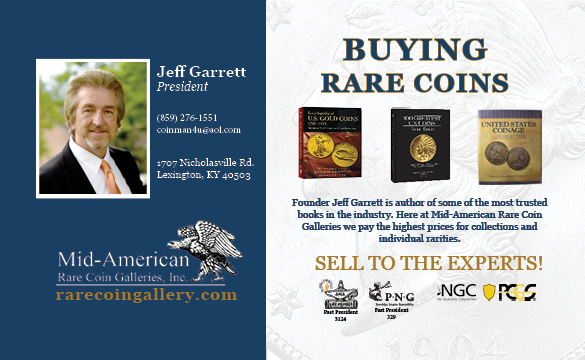
ERNEST HACK (1889-1971)
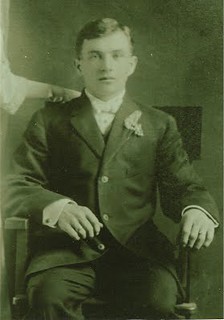 Ernest Hack was born "Ernest Polczynski" (1889-1971), owner of Eagle Stamp and Coin, Detroit Michigan. Active c. 1900 to 1940.
Ernest Hack was born "Ernest Polczynski" (1889-1971), owner of Eagle Stamp and Coin, Detroit Michigan. Active c. 1900 to 1940.
He was born on May 14, 1889, in Detroit, Michigan, son of Joseph Polczynski (1856-1891), and Valeris Clara Pyszora (1868-1937), both Polish-German immigrants. After his father's death on September 5, 1891, his mother remarried to Louis G. Hack (1867-1939), and he took on his adopted father's name being known as Ernest Hack. Ernest only completed the 3d grade Elementary School.
His business letterhead in 1912 says he was established in 1900 as a dealer in stamps, coins, curios, paper money and Indian relics at 1362 Baldwin Avenue, Detroit, Michigan. At that time he worked for McGraw Stamp Company and as we have seen had his own business at 1362 Baldwin Avenue, Detroit, Michigan. He finally left McGraw Stamp Company opening shop in 1914 at 206 Jefferson Avenue, Detroit, Michigan, selling stamps, coins and paper money. He moved his shop to 1269 Baldwin Avenue, but was forced to relocate in 1915 due to fire, when he removed to Granger Street, Detroit.
Also, in 1914, he married Mary Bradke (1888-), who was also born of German immigrant parents. They had three sons and five daughters.
From 1917 - 1920, he was working as a punch press operator at Burrows Adding Machine Company, Detroit.
He was a private in the Michigan National Guard. According to his Draft Registration Card he was of medium height and build and had grey eyes, and light brown hair.
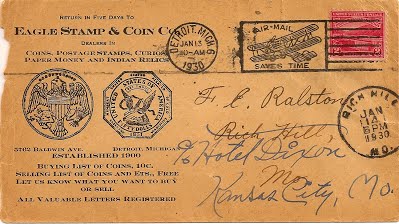
About 1930 his store was located at 5762 Baldwin Avenue, Detroit, Michigan. His 1930 U.S. Census report lists him as a punch machine operator at an adding machine factory.
He was an active member of the Detroit Museum and made many donations of artifacts gathered on various trips around.
He was a member of the Detroit Coin Club and donated a copy of Hazlitt, The Coinage of the European Continent, to the Library on December 18, 1930.
He was an electrical engineer by trade and patented an electric mail box in April 18, 1917, Serial No. 163058.
In his retirement he lived at St. Clair Shores, Macomb County, Michigan.
He died on September 21, 1971, at Romeo, Macomb County, Michigan.
To read the complete article, see:
HACK, ERNEST (http://www.numismaticmall.com/numismaticmall-com/hack-ernest)
HARVEY STACK'S NUMISMATIC FAMILY, PART 67
The latest article in Harvey Stack's blog series is about the year 1976 and Harvey's appointment to the U.S. Assay Commission. Thanks, Harvey. -Editor
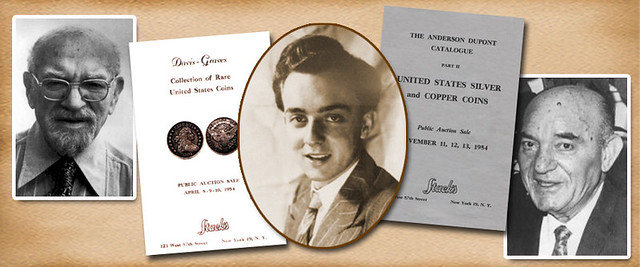
What, you may ask, made the year 1976 so important at Stack's? First of all, I (Harvey Stack) was appointed by President Gerald Ford to serve as a governor at the Annual Assay Commission in Philadelphia. This was a great honor as it was our country's bicentennial year, and also turned out to be the last year this commission was to be convened.
Second, we were involved with bringing the Louis E. Eliasberg, Sr. Collection to the new U.S. Mint building in Philadelphia to be the highlight exhibit during the Bicentennial. Third, Stack's was awarded the 1976 ANA Annual Convention Auction to be held in New York. While Philadelphia might seem to have been a more appropriate location for the convention, because of the Bicentennial and the millions of visitors flocking to that city, space in a convention center and local hotels was not available. Instead, New York City was chosen, with the convention and the auction to be held at the new Sheraton Hotel on Broadway. In addition, Stack's also had scheduled six other public auctions for the year. All of this was in addition to our ongoing retail business in our New York City shop as well as traveling to conventions and to pick up consignments and make appraisals.
After receiving my appointment to the U.S. Assay Commission, I was told a time in early February to be at the brand new U.S. Mint building in Philadelphia, which was not yet complete at that time. We governors arrived and were welcomed by the secretary of the Treasury, the director of the Mint, the head coiner and engraver, as well as the entire staff. We were taken to a special room, where there was the equipment needed to do our assigned jobs. Though the use of precious metal had been terminated for the dimes and quarters in 1964, silver remained part of U.S. coinage until 1967. However, by 1976, actual "assaying" of coins was not required of those of us on the commission. Instead our job entailed opening bags of coins to first count that they were correctly bagged, check if they were well struck, verify the milling on the edges, weigh samples to see that they conformed, measure the diameter to be certain they were "standard," and review the minting records made at each of the three mints. Though it seems to be a relatively simple operation, many reports had to be compiled which took a number of hours, and each report had to be signed and attested to by the governors. We were each given a bound copy of the reports, together with the additional documents we signed during our visit.
During our visit, we were taken down onto the Mint floor, where we watched how the metal was rolled into strips and how the strips were then bathed to give back their bright color. We saw how the planchet cutting machines prepared the blanks for striking, and we stood next to the coiners who were watching the planchets being fed into the presses as the coins were struck. We watched how the new coins were transported from the presses to the counting machines and then bagged. Samples were examined and counted again to ensure they were correct. Actually being on the coining floor and watching close up as each Mint employee completed an assigned job was very exciting.
That evening we had a special dinner in the Mint building, and were each presented with a document signed by President Ford that attested to the work we did, a special oval silver medal commemorating our commission, and even a small lapel piece which we were given to wear. It was a very memorable experience that I will cherish always.
In my next segment, I will tell the story of how the Eliasberg Collection almost "missed" the Bicentennial celebration at the Mint.
To read the complete article, see:
Harvey Stack Remembers: Growing up in a Numismatic Family, Part 67
(https://www.stacksbowers.com/News/Pages/Blogs.aspx?ArticleID=Harvey-Stack-Remembers-Part-67)
To read the earlier E-Sylum article, see:
HARVEY STACK'S NUMISMATIC FAMILY, PART 66 (https://www.coinbooks.org/v23/esylum_v23n13a28.html)
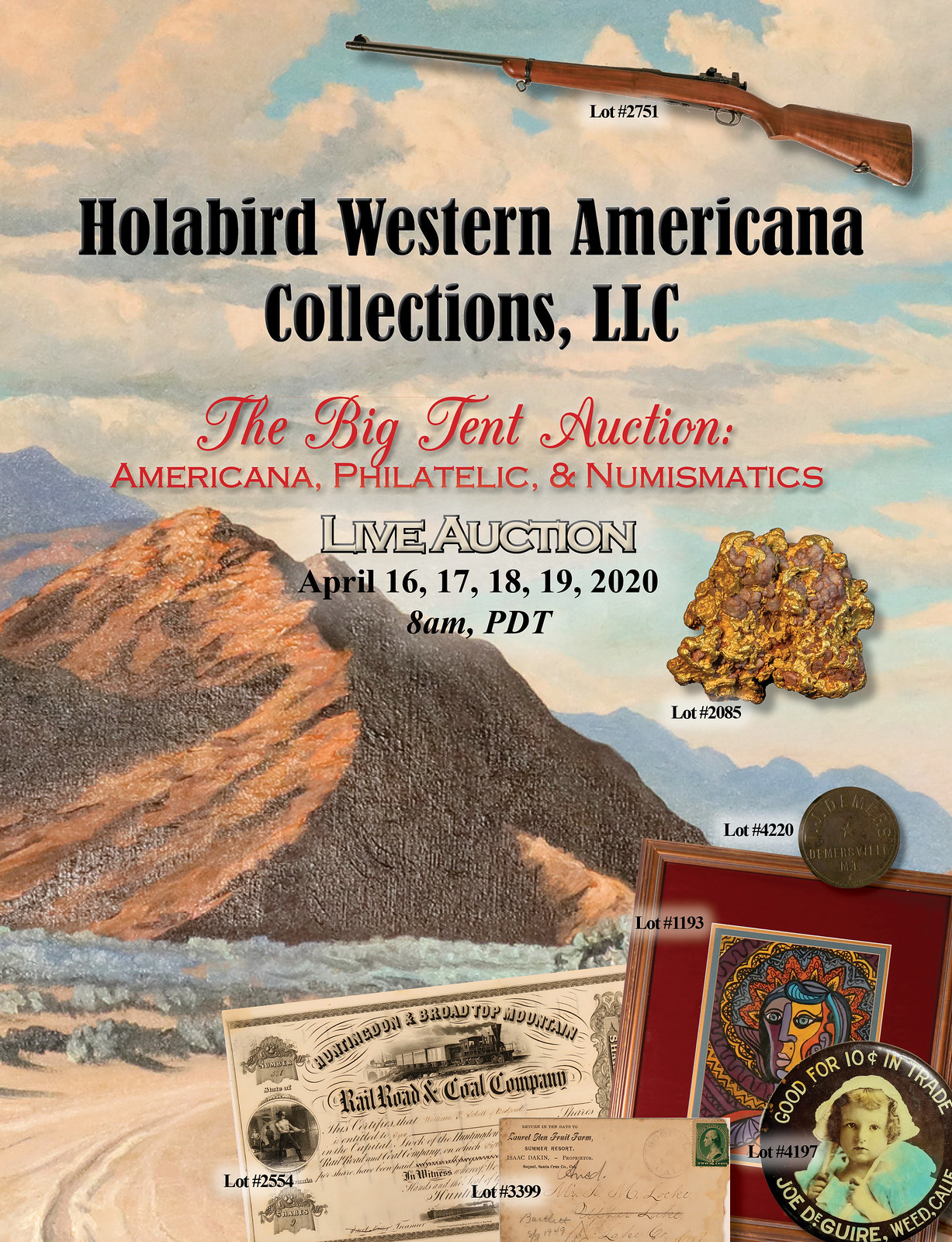
DR. RIDDELL: THE MELTER AND THE PLAGUES
Michael E. Marotta submitted this article on numismatic author Dr. John Leonard Riddell's early advocacy for germ theory. Thanks! I wasn't aware of this. -Editor
The Melter and the Plagues Dr. John Leonard Riddell was chief melter of the New Orleans Mint 1839 to 1848. In that capacity, he saw many counterfeit Mexican 8 reales silver coins. He catalogued them in his Monograph of the Silver Dollar (1845). Riddell also held two medical doctorates (the first of which he renounced as worthless), and invented the binocular microscope while teaching chemistry at the Louisiana Medical College (now Tulane University). Riddell was a firm advocate for the germ theory of disease a generation before Louis Pasteur and Joseph Lister. In those days, disease was attributed to "miasmas" or bad airs.
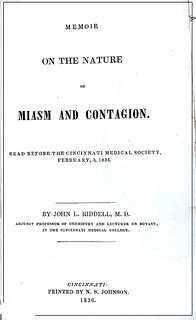 While working as a botanist and public lecturer in chemistry in Ohio, he published Memoir on the Nature of Miasm and Contagion: Read before the Cincinnati Medical
Society, February 3, 1836 (printed by N. S. Johnson, Cincinnati, 1836).
While working as a botanist and public lecturer in chemistry in Ohio, he published Memoir on the Nature of Miasm and Contagion: Read before the Cincinnati Medical
Society, February 3, 1836 (printed by N. S. Johnson, Cincinnati, 1836).
"I claim for the corpuscles cause malarious and infectious maladies, trans-microscopic as they are, the humble rank of belonging near the lower confines of organic nature. Perhaps they hold nearly the same grade in respect to animate and sentient beings, which the more simple and minute of Fungi and Algae do to the more perfect tribes of vegetables."
Citing the Danish naturalist Otto Friedrich Müller (appearing as "Muller") Riddell wrote "... myriads of these little creatures always make their appearance in fermenting infusions of animal or vegetable matter. They are by no means, however, confined to such infusions, being frequently met with on the leaden tiles of houses..."
Not everything in that monograph will resonate with current science. Much was not yet known. But it is clear that Riddell identified microscopic organisms as the cause of disease. That statement envelopes two complementary truths. Others agreed that the organisms appear. Many people—including civic authorities—accepted the theory of spontaneous generation: worms congeal out of mud; maggots precipitate from manure. And Riddell's 1835 Monograph hinted at that. No matter how purified a medium seems, after some time, microscopes reveal the living things within it. Cogently, however, Riddell consistently maintained that the organisms were always there undetected. Moreover, those organism are the causes of diseases, not consequences. Germs do not bloom as a result of miasma.
The miasma theory was still operative 20 years later when Riddell was among the civic leaders of New Orleans. In 1853, having been an official at the branch Mint as well as a lecturer at the Medical College of Louisiana, Riddell was enlisted to serve on a committee of savants to fight an outbreak of yellow fever.
Serving with him were the mayor, Abdiel Daily Crossman, Dr. Edward Hall Barton (former dean of the Medical College), Dr. Anthony Forster Axson, (former professor of physiology at the Medical College) and medical doctors S. D. McNeil and J. C. Simonds. Their finding were compiled into a 542-page volume, Report of the Sanitary Commission on the Epidemic Yellow Fever of 1853: Published by Authority of the City Council of New Orlean (printed by the Picayune, 1854).
From that report:
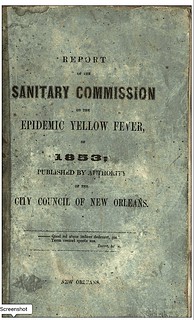 "To this Commission were deputed special instructions for inquiry and investigation, viz:
"To this Commission were deputed special instructions for inquiry and investigation, viz:
1st.--To inquire into the origin and mode of transmission or propagation of the late epidemic of yellow fever.
"2d.--To inquire into the subject of sewerage and common drains, their adaptability to the situation of our city, and their influence on health.
"3d.--To inquire into the subject of quarantine, its uses and applicability here, and its influence in protecting the city from epidemic and contagious maladies, and
"4th.--To make a thorough examination into the sanitary condition of the city, into all causes influencing it, in present and previous years and to suggest the requisite sanitary measures to remove or prevent them and into the causes of yellow fever in ports and other localities having intercourse with New Orleans."
Axson and McNeil were assigned the first task. Riddell was given the second. Simonds investigated the efficacy of quarantine. Barton reported on the sanitation in the city. They had some clue that the open pits of garbage in ponds and puddles of water were deleterious to health. And certainly as we know now, draining all those pools of water limited the mosquitos that carried the plague. They knew, also, that people infected with yellow fever could bring it into the city.
Dr. Barton associated the fever with the abundance of mosquitoes in the city but also with the abundance of common houseflies (and mold on fruit). It was another generation before Carlos Finlay of Cuba and William C. Gorgas of the United States were able to convince the medical establishment that the mosquito Aedes aegypti was the vector.
The Commission stated at the beginning of its Report that yellow fever is preventable; and that it has two causes, atmospheric and "terrene" (terrestrial). Detailed tables of atmospheric pressure and sunlight were compiled and correlated. The city was also cleaned up.
For his part, Riddell recommended that the city be flushed with water from the Mississippi River. Waste water could be carried back into the river or be sent into Lake Pontchartrain. Riddell also suggested that the open drains could be covered with clay or stone pipe as had been done in London. Riddell recognized, however, that a complete system of underground sewers with necessary pumping stations was beyond the means of the city to afford.
ANA CANCELS 2020 SUMMER SEMINAR
The ANA announced this week that the 2020 Summer Seminar has been cancelled. Here's the press release. -Editor
American Numismatic Association Cancels 2020 Summer Seminar
 The American Numismatic Association (ANA) announced that the 2020 Summer Seminar, scheduled for June 27-July 9 in Colorado Springs, Colo., has been cancelled due to
coronavirus (COVID-19) safety concerns.
The American Numismatic Association (ANA) announced that the 2020 Summer Seminar, scheduled for June 27-July 9 in Colorado Springs, Colo., has been cancelled due to
coronavirus (COVID-19) safety concerns.
"While it seemed inevitable with each passing week, we were officially notified by Colorado College today that they are suspending all summer programs and camps in order to 'restrict participants who have traveled to or from affected areas' associated with the coronavirus pandemic," says ANA Executive Director Kim Kiick.
Held on the campus of Colorado College adjacent to the ANA, Summer Seminar is a once-a-year opportunity for numismatic learning and camaraderie that offers hundreds of students from around the world a varied selection of week-long courses designed for discovery or continued study.
This is the event's first cancellation in its 50-plus year history.
"I know the students, instructors and staff are very disappointed in not being able to have a Summer Seminar this year," says ANA President Steve Ellsworth. "However, we are in agreement with Colorado College's decision and they have assured the ANA that they will work to reschedule Summer Seminar for 2021. We feel a huge loss of fellowship with our students and seminar instructors, as well as our team who has worked for months to make this beloved event a success. But our first priority is for the health and safety of our attendees and our community, so this is the right decision."
Scholarships that were awarded for the 2020 Summer Seminar will be honored for the 2021 event. Anyone who has pre-registered for the 2020 event will receive a full refund.

SUMMER 2020 ANA MONEY TALKS SPEAKERS WANTED
As of this writing the ANA's summer convention is still planned for August 4-8, 2020. We're all dreaming of the day when we can get back out among friends at a coin show. It can't hurt to plan ahead, even if the whole world seems on hold. Here's the call for Money Talks speakers - please consider sharing your expertise with fellow collectors. -Editor
Money Talks Speakers Wanted for Pittsburgh World's Fair of Money
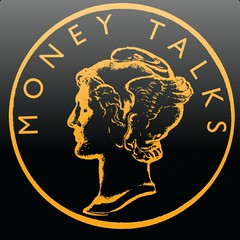 American Numismatic Association (ANA) members are encouraged to share their ideas and research with fellow hobbyists by delivering a Money Talks presentation at the 2020
World's Fair of Money® in Pittsburgh, Aug. 4-8 at the David L. Lawrence Convention Center.
American Numismatic Association (ANA) members are encouraged to share their ideas and research with fellow hobbyists by delivering a Money Talks presentation at the 2020
World's Fair of Money® in Pittsburgh, Aug. 4-8 at the David L. Lawrence Convention Center.
Those interested in giving a Money Talks presentation should submit an online proposal at money.org/numismatic-events/money-talks. Proposals are due no later than May 1 (despite information contained in the April issue of The Numismatist, the deadline to submit materials is Friday, May 1).
The Association continues to closely monitor COVID-19 developments and is hopeful that conditions will have improved by early summer so the World's Fair of Money can be held as scheduled. In the meantime, planning for the event continues.
The informative 30- to 45-minute Money Talks are presented by some of the hobby's most noted authorities and allow collectors to share their expertise with the numismatic community. Presentations from previous shows include "Siege Notes: The Currency of War," "Strategies to Dispose of Your Collection" and "Curious Currency of the World."
Money Talks presentations should be accompanied with digital images. Speakers should arrive 15 minutes prior to their presentation to set-up. Contact Sam Gelberd, the ANA's numismatic educator, at (719) 482-9846 for additional information.
Proposals can be submitted online or emailed to sgelberd@money.org

The World's Fair of Money is one of the largest, most educational coin shows in the country and features nearly a thousand numismatic dealers with extensive inventories. The show includes a wide range of technical seminars and educational presentations; an exhibits area; major auctions by Heritage Auctions and Stack's Bowers Galleries; and the ANA Museum Showcase, exhibiting some of the world's most rare and valuable coins and paper money. For more information, visit worldsfairofmoney.com.
SUMMER 2020 ANA EXHIBITS WANTED
Another way to share with your fellow collectors is by exhibiting. The application deadline for exhibiting at the 2020 ANA World's Fair of Money is June 10, 2020. It's not too soon to be thinking about your exhibit's title, theme and contents.
Here's a list of the exhibit winners from the recent ANA 2020 Atlanta National Money Show. See below for the link to exhibit applications. -Editor
 The American Numismatic Association (ANA) presented 25 competitive exhibit awards at the 2020 Atlanta National Money Show. Winners were announced at the Exhibit Awards
Presentation & Reception on Saturday, Feb. 29.
The American Numismatic Association (ANA) presented 25 competitive exhibit awards at the 2020 Atlanta National Money Show. Winners were announced at the Exhibit Awards
Presentation & Reception on Saturday, Feb. 29.
Dennis Schafluetzel received the Steven J. D'Ippolito Award for Excellence in Numismatic Exhibiting (best of show) for his exhibit, "Chattanooga Depression & Clearing House Scrip." The second place D'Ippolito award was presented to Mack Martin for "A Unique Collection of Georgia Certificates." Third place was awarded to Simcha Laib Kuritzky for his exhibit "Feline Paper Money Type Set."
The Radford Stearns Memorial Award for People's Choice, determined by votes from convention attendees, was presented to Jeffrey Rosinia for "A Taste of Collecting Coca-Cola."
The theme for National Coin Week this year is "Remarkable Women: Catalysts of Change" and the National Coin Week Award was presented to Richard Jozefiak for "The Start of a New Collectible—The Innovation of the First Elongated Souvenir Coins at the 1893 Columbian Exposition in Chicago." He will receive a full scholarship to a future ANA Summer Seminar, an award endowed by John Albanese.
National Coin Week exhibits are intended to be suitable for display in libraries and schools, so there is a $250 limit on the value of the materials in this competition. Second place in this category was awarded to Cindy Calhoun for "Dottie Dow and Her Elongated Handshake Coins." Third place also went to Jozefiak for "Collecting For Free: The Shell Company's Presidential Medals Set."
Radford Stearns Memorial Award for Achievement in Exhibiting were also presented in six classes. This year, 23 competitive and three non-competitive exhibits were displayed in the Collector Exhibits are by 18 exhibitors. Class winners are as follows:
Class 1: History and Politics (historical or political events)
- First—Mark Martin, "A Unique Collection of Georgia Certificates"
- Second—Michael T. Shutterly, "Vive le Franc!"
- Third—Cindy Calhoun, "Dottie Dow and Her Elongated Handshake Coins"
Class 2: Economics (monetary and financial systems or economic events, such as panics and inflations)
- First—Simcha Laib Kuritzky, "Israel's Two-Decade Long Road to Standardized Gold Coinage"
- Second—Lavonda Proveaux, "Twentienth Century Major Type Coins"
- Third—Michael T. Shutterly, "How Money Dies"
Class 3: Geography (natural or cultural assets, the distribution of populations, or exploration)
- First—Dennis Schafluetzel, "Chattanooga Depression & Clearing House Scrip"
- Second—Simcha Laib Kuritzky, "The Roaring Lion of Megiddo"
- Third—Richard Jozefiak, "Official Alaska Statehood Medals 1859 & 2009"
Class 4: Common Elements (material linked by common themes and designs, such as Queen Elizabeth II, elephants, bridges or world's fairs)
- First—Jeffrey Rosinia, "A Taste of Collecting Coca-Cola"
- Second—Gary J. Dobbins, "Honoring Music Through a World of Paper Money"
- Third—Halbert Carmichael, "New Zealand's Birds"
Class 5: The Arts (any aspect of fine or applied arts)
- First—Don Geddes, "The Legacy of Charleston Slave Badge Makers"
- Second—Simcha Laib Kuritzky, "The Heh Amulet"
- Third—Michael T. Shutterly, "Ludwig van Beethoven: A Man for All Reasons...or no Reason at all"
Class 6: Science (theoretical or applied science, including the technology of manufacturing numismatic items)
- First—Simcha Laib Kuritzky, "Feline Paper Money Type Set"
- Second—Robert Moon, "Nobody's Perfect!"
- Third—Richard Jozefiak, "The Start of a New Collectible—The Innovation of the First Elongated Souvenir Coins at the 1893 Columbian Exposition in Chicago"
The application deadline for exhibiting at the 2020 ANA World's Fair of Money®, which will be held Aug. 4-8 in Pittsburgh, Pennsylvania, is June 10. For an application form or more information, phone 719-482-9849; e-mail exhibits@money.org; or visit money.org.
For more information on ANA Exhibiting, see: https://www.money.org/numismatic-events/convention-exhibits
THE BOOK BAZARRE
PNG CALLS FOR 2020 AWARDS NOMINATIONS
Here's the press release for the Professional Numismatists Guild's call for nominations for their 2020 awards. -Editor
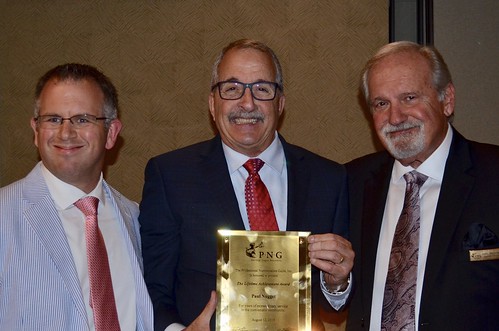
PNG Board member John Brush (left) and Executive Director Robert Brueggeman (right) presented the prestigious PNG Founder's Award to Paul Nugget (center) in 2019.
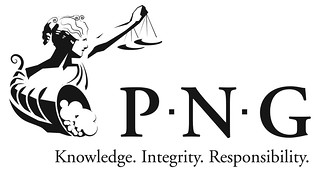 The Professional Numismatists Guild (www.PNGdealers.org) is now accepting nominations for its 2020 awards, according to PNG Executive Director Robert Brueggeman.
The Professional Numismatists Guild (www.PNGdealers.org) is now accepting nominations for its 2020 awards, according to PNG Executive Director Robert Brueggeman.
"Each year the PNG publicly recognizes outstanding achievements in the hobby and the profession by honoring deserving recipients with awards in a half-dozen categories. We cordially welcome and strongly encourage nominations from all collectors and dealers," said Brueggeman.
Award nominations must be made by May 29, 2020, and should be sent directly to the appropriate award category officials. The categories and contacts are:
Abe Kosoff Founders Award: Presented to a PNG member-dealer with steadfast dedication to the entire numismatic community and who has made a significant contribution to the Guild or to the numismatic fraternity in general the past year. The award is named after PNG's Founding President who spearheaded the 1953 launch of the organization. Committee Chairs: Richard Weaver and Wayde Milas. Emails: RWeaver@dvrcc.com and WMilas@rarecoa.com.
Sol Kaplan Award: To recognize efforts and contributions in combatting crimes against the numismatic community, this award is presented to someone who has given their time in an attempt to rid the profession of fraud and thievery. The award is jointly presented by the PNG and the Lewis M. Reagan Foundation. It is named after a former PNG President and Ohio dealer who was personally responsible for the apprehension of several people suspected of committing numismatic-related crimes. Committee Chair: Robert Brueggeman. Email: Bob@ppius.com.
Robert Friedberg Award: Presented to an author in recognition for an outstanding book or other literature. Named in honor of a publisher and author of numismatic reference books, this award is not automatically given each year. It is only given when there is deemed to be a worthy recipient or recipients. Committee Chair: James A. Simek. Email: nge3@comcast.net. Note: A copy of each book nominated for this year's award must be submitted for delivery no later than May 30, 2020 to James A. Simek, P.O. Box 7157, Westchester, IL 60154-7157.
Lifetime Achievement Award: Presented to a numismatist for his/her extraordinary devotion to numismatics and who, over their lifetime, significantly contributed to the hobby or profession. Committee Co-Chairs: John Brush and James Sego. Emails: John@DavidLawrence.com and JSego@JMScoins.com.
Significant Contribution Award: Given to those who have made exceptional, beneficial efforts over the years on behalf of PNG and the profession, and also added to the hobby. Committee Co-Chairs: Barry Stuppler and Duston Johnston. Emails: Barry@Stuppler.com and Dustin@ha.com.
Art Kagin Ambassador Award: This award is named after a former PNG President and nationally-known Iowa dealer who provided distinguished service as an advocate of numismatic goodwill. Committee Co-Chairs: Don Ketterling and Don Rinkor. Emails: DHKconsulting@verizon.net and Don@rinkor.com.
The award winners will be announced at the annual PNG Day banquet scheduled for August 3, 2020 following the planned PNG Day show (www.PNGdealers.org/png-events). The PNG Day show, at the David L. Lawrence Convention in Pittsburgh, Pennsylvania, will be open to the public and conducted the day before the start of the planned American Numismatic Association's World's Fair of Money® (www.WorldsFairofMoney.com) at the convention center.
The Professional Numismatists Guild is a nonprofit trade association composed of the country's top rare coin and paper money dealers who must adhere to a strict Code of Ethics (www.PNGdealers.org/code-of-ethics) in the buying and selling of numismatic merchandise.
For additional information about the PNG awards, contact Robert Brueggeman, PNG Executive Director, 28441 Rancho California Road, Suite 106, Temecula, CA 92590. Phone: 951-587-8300. Email: info@PNGdealers.org. Online: www.PNGdealers.org.
THE ELUSIVE NEW ENGLAND COUNTERMARK
One of my pastimes in recent weeks has been compiling for the Newman Numismatic Portal citations of articles on numismatics published in The Historical Magazine. The publication began in 1857, before there were numismatic societies and specialized numismatic publications in the United States, and I'm fortunate to have a bound set in my library. One frequent writer in those early days was Jeremiah Colborn of Boston whose "J.C." initials ended his contributions to The Historical Magazine.
In the January 1857 issue (Vol. 1, pgs 372-373), Colburn republished a passage from Joseph Felt's 1839 work, An Historical Account of Massachusetts Currency.
Here's the text of the article, carefully transcribed exactly as printed - spelling, capitalization, punctuation and all. I've done my best to reproduce this here. Many thanks to NNP's Kelli West of Washington University in St. Louis for her great work on this. -Editor
QUERIES.
MASSACHUSETTS CURRENCY- 1672.- "whereas peeces-of-eight are of more value to carry out of the country then they will yield to mint into our coyne,
by reason whereof peeces-of-eight which might else come to coyning are carried out of this country. It is therefore ordered by this COurt and the authority thereof, that all
peeces-of-eight, that are of full weight and good silver, that is of six shillings of N.E. money, of Mexico Sevil and Pillar, and to all less peeces of each sort shall passe in
this jurisdicon as current as our oune money, peeces-of-eight at Six Shillings a peece, and all less peeces proportionably thereunto, provided that all such peeces, that shall
passe in this jurisdicon have a stampe affixt upon them, which shall be N.E., to evidence that they are of right alloy and due weight, and that Mr. John Hull and Mr. Robert
Saunderson, or either of them, bee the persons for the tryall and stamping of such money, and that thereby fower pence upon the pound payd for the rest, one fowerth thereof to the
office, and the rest to the county Treasurer."
Pieces-of-eight under weight of 6 Shillings shall pass for so much of N.E. money as they weigh, and "that it be impressed upon the stampe how much each peece doth weigh, in legible figures with the other letters on the same and of the same alloy."
"1701. At this date, there was a scarcity of change. Such an occasion was followed with its usual consequences. Regardless of their irregular example and bent on their own convenience and gain, not a few individuals stamped pieces of brass and tin, and palmed them on community at a penny each. They were speedily commanded by the Legislature to withdraw from their course or be fined and imprisoned."- Massachusetts Currency, by J. B. Felt.
Have any of the readers of the Hist. Mag. ever met with any of the coins marked as above, and if so, will they communicate the fact to the H.M.?
J.C.
BOSTON, Oct, 1857.
My question to readers is the same one asked by Colborn in 1857. Is anyone familiar with a genuine example of a Spanish dollar countermarked with its weight as described by Felt? I'm familiar with regulated gold and of course the New England shillings coined by John Hull with their "N.E." stamp, but I'm not familiar with New England countermarked Spanish silver dollars.
A search in NNP located one reference to the elusive New England countermark. It's by Ken Bressett and was published in the Summer 2015 issue of The C4 Newsletter from the Colonial Coin Collector Club. Here's an excerpt. -Editor
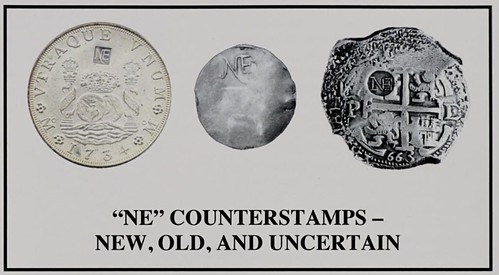
A Massachusetts Court Order was passed in 1672 authorizing the marking of fullweight Spanish pieces-of-eight with the letters "NE" to confirm their value as six New England shillings. Boston minters John Hull and Robert Sanderson were appointed to test and so mark coins that met the Court's requirements for weight and purity.
A reference to this order became generally known to numismatists through publication in An Historical Account of Massachusetts Currency by Joseph B. Felt in 1839. Since that time researchers and collectors alike have hoped to locate examples of such coins to confirm adherence to the ordinance. In 1875 a second and even more widely circulated publication, The Early Coins of America by S. S. Crosby, also published the Act with Crosby's personal comment: "We have been unable to find any coins proving this Act ever to have been put in execution, although we have long sought for them."
There is no evidence that any of the silver coins of that period were ever stamped in accordance with the ordinance. Indeed there was no pressing reason to do so and no convenient means of doing so. The Act of 1672 setting the value of eight-real coins at six shillings remained in effect until 1683 and effectively removed any incentive for having those coins converted to Massachusetts shillings, or counterstamped with any sort of markings.
The earliest report of a "NE" counterstamped coin was in an article written by well known collector Matthew Stickney and published in 1860. In his persuasive account Stickney claimed to own such a coin and described it in detail without sighting from whom it was obtained. A detailed account of this is presented here under the record of the coin termed "A." It offers compelling evidence of the existence of a genuine coin meeting the requirements of the Massachusetts Act of 1672. Yet no such coin has ever been reported or unmistakably described elsewhere, and there exists no indisputable evidence that Stickney ever possessed such a coin. None was included with his "entire collection" when it was sold at auction in 1907.
Various opinions have been expressed over the years that either support or deny the existence of coins associated with this Act. A number of coins do exist with a persuasive "NE" counterstamp indicating they may have been made in compliance with the order. An equally convincing argument can be made for the improbability of those coins having a contemporary stamp. This paper examines each of the known specimens and presents as much factual data as is available in a quest to determine the authenticity of any of these pieces. Researching these controversial coins has been an ongoing and intriguing task of mine, and others, for many years.
Bresett's extensively researched paper seems to be the last word on this enigmatic subject. The Stickney specimen has either been lost or never existed. All the known pieces surfaced beginning in the 1950s and are genuine coins with a modern countermark applied. -Editor
Ken Bressett adds:
"Nothing further has shown up since I wrote the full exposé."
References on the Newman Portal, see:
An historical account of Massachusetts currency (https://nnp.wustl.edu/library/book/519845)
The C4 Newsletter: Summer 2015 (https://nnp.wustl.edu/library/book/534850?page=6)

CLASSICAL NUMISMATIC GROUP SALE 114 ANNOUNCED
Here's the press release for the CNG spring sale. Some amazing coins here. -Editor
A Public and Online Sale
Closing Wednesday & Thursday, 13-14 May 2020
 Classical Numismatic Group is proud to present CNG Feature Auction 114, a Public and Online Sale closing Wednesday & Thursday, 13-14 May 2020. CNG 114 will be held
at the Lancaster Marriott at Penn Square, 25 South Queen Street, Lancaster, PA 17603 in the Independence Room (2nd Floor). This sale offers 1405 lots with a presale estimate of
$2.54 million.
Classical Numismatic Group is proud to present CNG Feature Auction 114, a Public and Online Sale closing Wednesday & Thursday, 13-14 May 2020. CNG 114 will be held
at the Lancaster Marriott at Penn Square, 25 South Queen Street, Lancaster, PA 17603 in the Independence Room (2nd Floor). This sale offers 1405 lots with a presale estimate of
$2.54 million.
Our annual spring sale features Greek, Celtic, Oriental Greek, Central Asian, Roman Provincial, Roman Republican, Commercial weights, Roman Republican and Imperatorial, and Roman Imperial coinage. Additionally, there are featured selections of Byzantine, Early Medieval and Islamic, World coinage and medals, British coinage and medals.
CNG 114 is highlighted by a number of collections and individual rarities, which make up the majority of coins on offer:
- Further Offerings from the Jack A. Frazer Collection of Ancient, World, & British Coinage
- A Selection of Ancient Coins from an English Queen's Counsel
- Greek and Roman Coins from the Jonathan P. Rosen, John L. Cowan, Benito, San Vicente, and Weise Collections
- A Choice Gold Stater of Tarentum from the Time of Pyrrhos
- A Syracuse Dekadrachm from the Hermitage Collection
- An Extensive Offering of Greek Electrum Coins, including Further Selections of Kyzikos from the Siren Collection
- Further Selections of Seleukid Coins from the MNL Collection
- Roman Coinage from the Collection of Professor David R. Beatty, C.M., O.B.E.
- A Large Offering of Mark Antony Legionary Denarii
- Roman Imperial Gold from the Provence Collection
- An Adlocutio Sestertius of Galba – Among the Finest Known
- A Choice Hadrian and Divus Trajan Aureus
- A Significant Offering of Coins from the Travel Series of Hadrian
- Fourth Known Presentation 10 Dirhams from the Mongol Great Khans
- Selections from the James & Martha Robertson Collection of British & Scottish Coinage, Including a Diverse Selection of Thrymsas, Sceatts, and Pennies, and An Important Offering of Early Scottish Coinage
IMPORTANT NOTE: Due to the developing situation regarding the novel coronavirus COVID-19, governments are continually placing restrictions upon public gatherings and travel. It is therefore likely that all of the information in our catalog, regarding venue, lot viewing, and lot pickup, as well as the terms of sale listed on our website, will change.
CNG will communicate any changes via email and social media (Facebook and Twitter).
Catalogs for CNG 114 have been mailed to our active mailing list and bidding is open on the site. Some of the individual highlights from CNG 114 are:
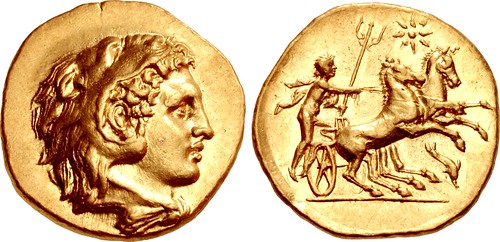
Lot 3 – CALABRIA, Tarentum. Circa 281-276 BC. AV Stater (18.5mm, 8.28 g, 5h). Youthful head of Herakles right, wearing lion skin / Taras, holding reins in right hand,
trident in left, driving fast biga right; star above; below horses, dolphin downward. Fischer-Bossert G21 (V18/R21); Vlasto, Or Type O 1 [b]; Vlasto 16 = Gulbenkian 34 (same
dies); HN Italy 955; BMC 13 (same dies). Lustrous. Choice EF. Well centered and struck on a broad flan, in high relief. A choice example of this very rare issue.
Estimated at $50,000.
This rare and beautiful gold stater type was most likely struck by Pyrrhos of Epeiros during his expedition to southern Italy, at Tarentum's invitation, to fight the expansionist Romans circa 281-276 BC. Struck from dies of extraordinary style in sculptural high relief, the obverse emulates the famous silver coinage of Alexander III the Great of Macedon. The reverse depicts Taras holding a trident and driving a biga, establishing Tarentum as the mint. Wolfgang Fischer-Bossert, citing the support of S. Garraffo and G.K. Jenkins, places the issue during the famous Italian expedition of the Epirote dynast Pyrrhos, whose desire to imitate Alexander's career of conquest was well known. The bloody campaign of Pyrrhos gave us the term "Pyrrhic Victory," meaning a victory won at such terrible cost that it might as well be a defeat.
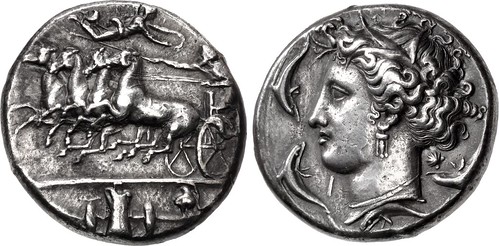
Lot 68 – SICILY, Syracuse. Dionysios I 405-367 BC. AR Dekadrachm (34.5mm, 42.34 g, 11h). Unsigned dies in the style of Euainetos. Struck circa 405-380/67 BC. Charioteer,
holding kentron in extended right hand and reins in left, driving fast quadriga left; above, Nike flying right, crowning charioteer with wreath held in her extended hands; below
heavy exergual line, [military harness, shield], greaves, cuirass, and crested Attic helmet, all connected by a horizontal spear; [AT?A below] / Head of Arethousa left, wearing
wreath of grain ears, triple-pendant earring, and pearl necklace; [S-????-?-S-?O? behind hair], I below chin, shell behind neck, four dolphins swimming around. Gallatin dies
R.XIV/F.VII; Scavino 44 (D13/R25); HGC 2, 1299; SNG ANS 373 (same dies); Hermitage Sale II 351 (this coin); McClean 2735 (same dies). Lovely old cabinet tone, only a hint of die
rust on obverse, field smoothed on reverse. Near EF.
Estimated at $25,000.
Ex Münzhandlung Basel 8 (22 March 1937), lot 166; Hermitage Museum Collection (Schlessinger 13, 4 February 1935), lot 351.

Lot 238 – MYSIA, Lampsakos. Circa 394-350 BC. AV Stater (16.5mm, 8.36 g, 1h). Head of female satyr left, wearing wreath of ivy, single-pendant earring, and necklace /
Forepart of Pegasos flying right. Baldwin, Lampsakos 32, dies I/a; SNG BN –; BMC 24 (same dies); Prospero 472 (same dies) = Jameson 2579; NAC 116, lot 170 = Gemini VII, lot
472 (same dies). A few light marks, weak strike in center of reverse. Good VF. Extremely rare, only one noted by Baldwin (in the BM), two in CoinArchives.
Estimated at $30,000.

Lot 547 – Anonymous. Circa 215-212 BC. Æ Aes Grave Tressis (64mm, 254.9 g, 12h). Post-semilibral series. Rome mint. Head of Roma right, wearing griffin-crested helmet;
||| (mark of value) behind; all on a raised disk / Prow of galley left; ||| (mark of value) above; all on a raised disk. Crawford 41/3a; ICC 102; Thurlow & Vecchi 68; RBW –.
Dark green patina with some earthen highlights/deposits, surfaces a little rough, bare metal on highpoints. Good VF. Extremely rare, only two complete specimens in CoinArchives,
plus one fragment. The most recent sale was the Triton VIII (2005), lot 816, which realized $18,000 hammer.
Estimated at $5,000.
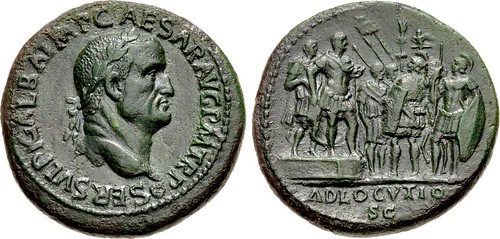
Lot 774 – Galba. AD 68-69. Æ Sestertius (35mm, 25.47 g, 6h). Rome mint, 7th officina. Struck circa December AD 68. SER SVLPI GALBA IMP CAESAR AVG P M TR P, laureate head
right, globe at point of neck / ADLOCVTIO/ S C in two lines in exergue, Galba, bareheaded in military dress, standing right on low platform on left, haranguing troops; to left on
platform is an officer also standing right; to right on ground line, two soldiers standing left, the one in front holding oblong shield and signum, the one behind an oblong shield
and spear; between them are seen the head and front legs of a horse; in the background are two soldiers standing right, carrying two spears and vexillum; to far right, an aquila.
RIC I 463; ACG 365 (A122/P – [unlisted rev. die]); cf. BMCRE 249-51; BN 235 var. (bust type). Green patina. Near EF. An amazing reverse composition. Among the finest known.
Estimated at $30,000.
By AD 68, Servius Sulpicius Galba had governed Hispania for nearly eight years with a single Roman legion, VI Victrix, under his command. In April of that year, with Nero's regime crumbling, Galba appeared before his soldiers and proclaimed himself a vir militaris representing the Senate and People of Rome, marking his break with Nero and taking the first steps that would lead to his brief, chaotic reign as emperor. The scene is reproduced on this remarkable sestertius, an artistic tour de force, struck at the mint of Rome in December of 68. Although Adlocutio scenes depicting the emperor addressing soldiers had appeared on Roman coins before, notably on sestertii of Caligula and Nero, this piece represents a sharp departure from prevailing artistic norms. The four visible soldiers and a single horse are arrayed, not as identical units in ordered ranks, but in a variety of individualized postures and kits, along with standards, banners and weaponry, all layered to to suggest a huge mass of restless Roman soldiery. Galba faces them on a raised platform dressed as a soldier himself, his facial features distinctive despite the small scale. The composition has been aptly termed a masterpiece of numismatic art that has seldom, if ever, been equaled in the centuries since.
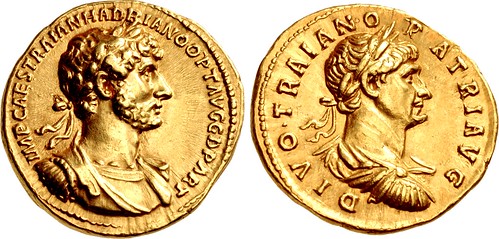
Lot 844 – Hadrian, with Divus Trajan AD 117-138. AV Aureus (19mm, 7.29 g, 6h). Rome mint. Struck August-December AD 117. IMP CAES TRAIAN HADRIANO OPT ?VG G D P?RT,
laureate and cuirassed bust of Hadrian right, slight drapery, exposed upper part of breastplate visible, wearing balteus strap / DIVO • TRAIANO PATRI AVG, laureate, draped, and
cuirassed bust of Divus Trajan right. RIC II.3 28 (same dies as illustration); Strack 10?; Calicó 1412 (same dies as illustration); BMCRE 44 (same dies); Biaggi 564 (same dies);
Jameson –; Mazzini 2 (same dies). Lustrous. Choice EF. Two spectacular portraits in high relief, perfectly struck on a broad flan.
Estimated at $50,000.
From the Jonathan P. Rosen Collection. Ex Numismatica Ars Classica 97 (12 December 2016), lot 119 (hammer 75,000 CHF); Palombo 13 (13 December 2014), lot 59 (hammer 130,000 CHF).
Publius Aelius Hadrianus, born to an aristocratic family in Roman Spain, lost his biological parents by AD 86 and became the ward of the future emperor Trajan, another Spaniard. As a young man, Hadrian began a career in the Roman government and military, and in about AD 100 married Sabina, a favored great-niece of Trajan. He also cultivated the friendship of Trajan's wife Plotina. Though widely regarded as a favorite for the succession, Hadrian was not formally named Caesar until Trajan fell fatally ill in Cilicia while returning from his great eastern campaign. It was not a universally popular choice and rumors immediately spread that Hadrian's adoption was stage-managed by Plotina after Trajan had already died. Hadrian, serving as governor of Syria, took immediate action to secure the throne, inducing the eastern legions to acclaim him as emperor by means of a hefty bonus. He then wrote to the Senate declaring his accession a fait accompli, but requesting his formal designation as emperor along with the deification of Trajan. With no real alternative, both requests were readily granted. This spectacular aureus, pairing Hadrian's portrait with that of the newly deified Trajan, was struck in Rome during the first months of the reign to mark both the accession of a new emperor and the creation of a new god, who is pointedly named as his father (DIVO TRAIANO PATRI AVG).
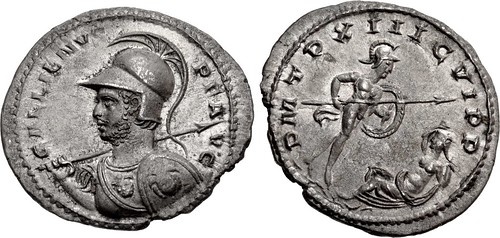
Lot 977 – Gallienus. AD 253-268. AR Denarius (21.5mm, 2.68 g, 11h). Rome mint. 8th emission, circa AD 264-265. GALLIENVS P F A VG, bust left, wearing crested Corinthian
helmet and cuirass decorated with an aegis on the breast, balteus across chest, holding in right hand a spear over his far shoulder, shield decorated with aegis on left arm / P M
T P XIII C VI P P (sic), Mars, holding transverse spear in right hand and round shield in left, descending right through the air to Rhea Silvia, who is reclining, naked to waist,
asleep on the ground, hands behind her head. Cf. MIR 36, 945-6 for reverse type with alternate legends; otherwise unpublished. Full silvering, medium cabinet tone, traces of
deposits. Choice EF. Struck in high relief with artistic dies. Unique.
Estimated at $20,000.
Ex Palombo 17 (20 October 2018), lot 101.
This denarius, seemingly unique, can be dated to AD 264-265 because of the reverse legend, "Tribunicia Potestate tertium decimum Consul sextum", as it is in AD 264 that Gallienus became Consul for the sixth time (with Saturninus). Roma XIII, lot 890, and XIV, lot 796, and Triton XXI, lot 832 have offered for sale three coins that closely resemble this example, but with a different reverse legend: instead of P M T P XIII C VI P P (on this coin), they bear the legend P M TR P XV C VII P P. The reverse type of this coin has already been studied by Jean-Marc Doyen (Recherches sur la chronologie et la politique monétaire des empereurs Valérien et Gallien, vol. 2a: Etude des émissions monétaires de Milan, PhD thesis, Louvain-la-Neuve 1989, pp. 101-103, available online), and it is copied from a rare series of Antoninus Pius, struck in AD 140 (as ref. RIC III 694a and aureus ref. Calicó 1689), which celebrated with some advance the 900th birthday of Rome. It was first used by Gallienus in 260, with the legend TRIB POT VIII COS III and a laureate bust left, on a coin struck in Mediolanum (Milan) (ref. MIR 36, 945gg = Doyen 49), and again with the legend TRIB POT COS IIII (MIR 36, 946gg = Doyen 71). It shows Mars descending toward Rhea Silvia, daughter of King Numitor and a Vestal virgin who is depicted as sleeping in the forest, just before raping her. This mythological episode (told by Ovid, Fast. III.V.11 and Livy, Ab Urbe Condita I) is of the utmost importance for the story of Rome, as the intercourse led to the conception of the twins Romulus and Remus, legendary founders of Rome. The same iconography can be found on wall paintings from Pompeii and in the baths of Titus (see LIMC II/1 pp. 459-51 and II/2 pls. 415-6), but also on mosaics, reliefs, silverware, and gems.
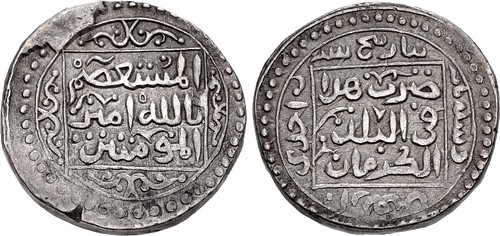
Lot 1090 – ISLAMIC, Mongols. Great Khans. temp. Töregene Khatun. Regent, AH 639-644 / AD 1241-1246. AR 10 Dirhams (31mm, 28.39 g, 11h). In the name of the ‘Abbasid
caliph al-Musta'sim billah. al-Kurraman mint. Dated AH 641 (AD 1243/4). al-musta'sim/billah al-'amir/al-muminin in Arabic in three lines; all within linear quadrate border within
double linear and pelleted border; ornaments in voids / zuriba haza/fi al-balad/al-kurraman in Arabic in three lines; all within linear quadrate border within double linear and
pelleted border; sanat ihda wa arba'in wa sittmi'at (date) in Arabic in voids. Nyamaa –; Album –; ICV –; Zeno 148091 = NGSA VIII, lot 289 (same dies); Triton XXIII, lot 949 (same
dies); Triton XXII, lot 1234 (same dies). Areas of toning, die break on obverse, test cut. VF. The fourth to appear at auction.
Estimated at $20,000.
Previously unpublished until the appearance of the Numismatica Genevensis SA coin, this 10 dirhams represents an important period in Mongol history. Following the Mongol conquest of eastern Afghanistan in AH 618 (AD 1221/2), the inhabitants of al-Kurraman, a river district in what are today the tribal borderlands between Afghanistan and Pakistan, showed their allegiance to the Mongols by striking coinage in the name of the Great Khan. Following the death of – the religious and spiritual authority. During this uncertain period among their Mongol overlords, the al-Kurraman mint may have felt it prudent to strike a non-partisan issue in the name of the current 'Abbasid caliph. Whether used as tribute to the caliph in Baghdad, as payment for soldiery employed by Töregene, or to buy the loyalty of the locals, these coins were quickly melted and reused, thus making them exceedingly rare. The last known coinage from this mint was struck in the name of the Great Khan Möngke, after which this mint disappears from the numismatic records.
Ögedei Khan in AH 639 (AD 1241), a period of turmoil followed over the succession. Ögedei Khan's wife, Töregene (Turakina) became regent, serving until her son Güyük was elected Great Khan in AH 644 (AD 1246). During this regency, Töregene ruled with complete authority as Great Khatun – female counterpart to the Great Khan.On this coin, however, neither Töregene's name or title appears. Instead, the Abbasid caliph al-Musta'sim is cited as al-'amir al-muminin
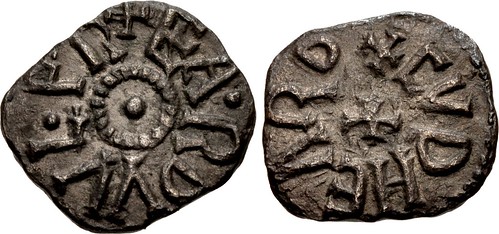
Lot 1245 – ANGLO-SAXON, Kings of Northumbria. Eardwulf. First reign, 796-806. AR Sceatt (14mm, 0.93 g, 9h). York mint; Cuthheard, moneyer. + EA·RDVVL·F R, pellet in
dotted circle / + CVDHEARD, cross pattée. Pirie, Guide 3.2a = E.J.E. Pirie, "Earduulf: a significant addition to the coinage of Northumbria" in BNJ 65 (1995), pl. 2, 12; Pirie,
Guide 3.2b var. = M. Blackburn & A. Gillis, "A second coin of King Eardwulf of Northumbria and the attribution of the moneyer coins of King Ælfwald" in BNJ 67 (1997), pl. 24,
3 var. (rev. legend; same obv. die); Abramson 86.40; EMC 2009.0079 var. (same; same obv. die); North –; SCBC 858. Toned. VF. Extremely rare, none in CoinArchives.
Estimated at $7,500.
From the James & Martha Robertson Collection. Ex Classical Numismatic Group 106 (13 September 2017), lot 1082 (hammer $17,000).
Eardwulf acceded to the Northumbrian throne in the tumultuous period following the assassination of Aethelred I in 796. Eardwulf had helped organize the murder of Aethelred in revenge for Aethelred's earlier, nearly successful, attempt on Eardwulf's life. Eardwulf's reign was characterized by conflict with Coenwulf of Mercia who gave asylum to his enemies. In the late eighth century, close ties existed between the Northumbrian and Frankish courts and it may have been that Eardwulf married an illegitimate daughter of Charlemagne. Eardwulf was deposed in 806 by the shadowy Aelfwald II and went on pilgrimage to Rome and visited the Emperor's court in Nijmegen. Frankish sources suggest he may have reclaimed his kingdom in circa 808 before being succeeded by his son Eanred, possibly around 810. No coins were known of Eardwulf before the Burton Fleming find in 1994 (EMC 1995.6001; Pirie, BNJ 1995, pp. 20-31). This is the only coin of Eardwulf to be offered for sale in a public auction.

Lot 1357 – COMMONWEALTH. Oliver Cromwell. Lord Protector, 1653-1658. Pattern AV Broad (29.5mm, 8.99 g, 6h). Dies by Simon Blondeau's mint, Drury House, London. Dated
1656. OLIVAR · D · G · R · P · ANG · SCO · HIB · &c PRO ·, laureate and draped bust left / · PAX · QVÆRITVR · BELLO · 16 56, crowned coat-of-arms. Lessen A2; W&R 39;
Schneider 367; North 2744; SCBC 3225. Light rub on high points, faint hairlines. Toned with traces of luster. Good VF.
Estimated at $10,000.
From the James & Martha Robertson Collection. Ex Marshall Collection (Spink 167, 31 March 2004), lot 154; Spink Numismatic Circular L.6 (June 1942), no. 14750.
Printed catalogs for CNG 114 are now available. To order the catalog, please call our U.S. office at (717) 390-9194. Catalogs have been mailed to customers on CNG's active mailing list. Prospective bidders may also view the virtual catalogs at https://issuu.com/cngcoins/docs/cng_114_virtual_catalog. The sale can be viewed online at auctions.cngcoins.com, sixbid.com, and numisbids.com.
In addition to CNG Feature Auction 114, CNG will also feature over 900 lots from many of the same collections listed above in their Electronic Auction 468, closing one week later on Wednesday, 20 May 2020, from 10AM ET (U.S.). Bidding for CNG Electronic Auction 468 will begin on 6 May 2020.
CNG is currently accepting consignments for future auctions sales. Please contact the firm for further details and consignment deadlines.
For further details and any additional information, please contact CNG, LLC at: Classical Numismatic Group, LLC
P.O. Box 479
Lancaster, PA 17608-0479
Telephone: (717) 390-9194
Fax: (717) 390-9978
Email: cng@cngcoins.com

ROBINSON ANCIENT COIN SALE 112 SELECTIONS
Here are some pieces that caught my eye in Frank Robinson's upcoming sale of ancient and early coins. -Editor
Lot 25: Mithradates III & Queen Gepaepyris
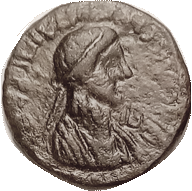

BOSPORUS, Mithradates III & Queen Gepaepyris, AD 39-45, Æ23, His bust r/Her bust r,. IB in front, GIC-5433; F+, lgnds wk, brown patina, both portraits strong with detail. Rare.
If you collect women on coins, I bet you never even heard of Gepaepyris. (A VF brought $253, CNG 5/04.) Starting bid $30
Lot 64: Krannon Horesman
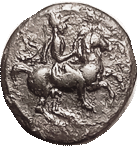
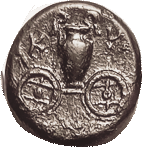
KRANNON, Æ17, 400-344 BC, Horseman r/Vase on cart, S2073; VF, well centered, brown patina, good clear features; minor touches of roughess, but nice. Ex BCD with his tag. (A VF sold for $301, Savoca 1/19.) Starting Bid $35
Nice horsie. -Editor
Lot 75: Mesembria Tetradrachm

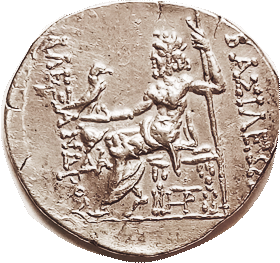
Tet, Posthumous, of Mesembria, in left field helmet above Delta-A, HP monogram under seat, Pr.1066; Choice EF, nrly centered on broad flan, bright lusterlike metal, microscopic signs of cleaning, quite well struck with superb portrait detail. (An EF, same var, same dies, brought $728, Roma 9/19.) Starting Bid $300
Great piece. -Editor
Lot 109: Orodes I
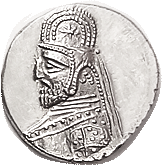

109 Orodes I, 31.6, Choice EF, nrly centered, bright lusterlike silver, faint cleaning hairlines under magnification, portrait totally sharp, I mean, like, totally, dude. Totally. (A GVF brought $306, Gorny 3/11.) Starting Bid $100
Lot 173: Thasos Stater

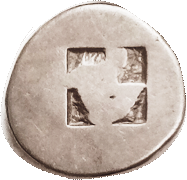
THASOS, Stater, 510-480 BC, ithyphallic Satyr carrying struggling nymph Nice AVF, centered on a large flan, well struck with bold features, excellent metal with lt tone. The all-important you-know-what on obv fully clear. (An AVF brought $510 on $560 bid in my 9/98 sale.) Starting Bid $220
'Nuf said. -Editor
Lot 252: Caesarea Hemidrachm

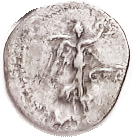
Caesarea, Hemidrachm, Nike adv r, ET-Delta, F-VF, somewhat off-ctr, full tho crude obv lgnd, minor traces of graininess, portrait with exceptionally long nose! (A VF with sl roughness brought $140, CNG eAuc 7/08.) Starting Bid $20
What a honker! -Editor
Lot 331: CONSTANTIUS I Follis
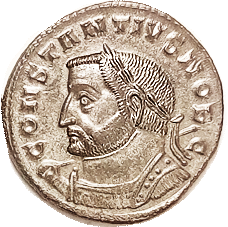

CONSTANTIUS I, Follis, Bust left carrying spear/GENIO POPVLI ROMANI, Genius stg l, altar, A/PLC, EF, obv perfectly centered & well struck, rev has sl double striking in lgnd. Ltly toned silvered surfaces, quite lustrous on obv. Choice example of this rare type only from Lugdunum. (An AEF realized $324, Lanz 12/15. Mine much nicer.) Starting Bid $150
Very nice. -Editor
Lot 461: West Africa Bracelet Money

West Africa, "Manilla" (slave) bracelet money, copper, abt 4-1/2 ozs, 82 mm wide, 18th-19th cent, smooth dark brown patina. Nice example. Starting bid $15
Agreed - nice example. -Editor
To review the complete auction, see:
http://www.fsrcoin.com/a.html
To read the earlier E-Sylum article, see:
ROBINSON ANCIENT COIN SALE 112 ANNOUNCED (https://www.coinbooks.org/v23/esylum_v23n14a26.html)
HOLABIRD APRIL 2020 SALES ANNOUNCED
Here is the press release for the April 2020 Holabird sales. See my earlier article (linked below) for some selected lots. -Editor
HOLABIRD WESTERN AMERICANA COLLECTIONS' FOUR-DAY BIG TENT AUCTION WILL BE ONLINE-ONLY, APRIL 16-19, WITH NEARLY 3,100 LOTS IN 30 CATEGORIES
The categories include philatelic and numismatic (stamps, coins), mining, Americana, railroad.
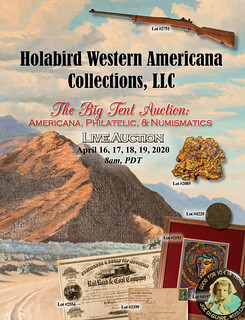 A huge, four-day, online-only Big Tent Auction packed with nearly 3,100 lots of philatelic and numismatic (stamps and coins), mining, Americana, railroad collectibles
and more will be held Thursday thru Sunday, April 16-19, by Holabird Western Americana Collections, LLC, starting at 8 am Pacific time each day. There will be no live in-gallery
bidding for this sale.
A huge, four-day, online-only Big Tent Auction packed with nearly 3,100 lots of philatelic and numismatic (stamps and coins), mining, Americana, railroad collectibles
and more will be held Thursday thru Sunday, April 16-19, by Holabird Western Americana Collections, LLC, starting at 8 am Pacific time each day. There will be no live in-gallery
bidding for this sale.
Online bidding will be facilitated by iCollector.com, LiveAuctioneers.com, Invaluable.com, AuctionMobility.com and Auctionzip.com. On Day 3 only, people will also be able to bid at www.StampAuctionNetwork.com. Telephone and absentee bids will also be accepted. The number to call for phone bidders is 775-851-1859. For details, please visit www.fhwac.com.
"Our Reno facility is currently closed and will not be open to in-person attendees, but the vast majority of the bidding action takes place online and over the phone anyway, so we're expecting a huge online turnout for this auction," said company president Fred Holabird. "Meantime, we're observing WHO recommendations and sanitizing the offices and gallery up to four times a day."
The auction features items in around 30 collecting categories. It will be led by Part 2 of the John Reynolds collection of California tokens, medals and shell cards, as well as his fabulous aviation mail (and California) postal history collection of more than 10,000 covers, plus his Pioneer post card collection and an important collection of circus and slide show photography and ephemera.
"We only split out some of the circus and slide show collection, such as the tokens, medals and scrip, into individual lots," Mr. Holabird said. "The bulk of the collection is so good, and of such excellent quality, that we felt it needed to stay together as a whole." Thousands of photographs (CDV, cabinet card, photo post cards) collected since the early 1960s, will be offered as one lot.
That collection, with a pre-sale estimate of $60,000-$85,000, is an expected highlight of Day 1, which overall will have 754 lots of Native Americana, general America, art and books. Also up for bid will be an original gouache on paper portrait of a woman by Cuban artist Amelia Pelaez (1896-1968), signed and with an image area of 16 inches by 11 ¾ inches (est. $10,000-$20,000).
Other Day 1 highlights will include a large-scale oil on canvas depiction of a Civil War scene by Michael Thomas O'Loughlin (Idaho, 1951-2017), titled The Dyin' Cry of the Blue II, in a 69 inch by 44 inch frame (est. $3,000-$5,000); and a circa 1970s Navajo turquoise squash blossom necklace with a beautiful selection of stones surrounded by fine silver work (est. $1,200-$1,800).
Day 2 will be busy, with 753 lots of mining equipment, minerals, mining artifacts and ephemera, stocks and bonds in multiple categories (to include mining and railroad), sports, militaria and firearms and weaponry. One noteworthy lot is the gold and quartz specimen, a native gold in quartz matrix with 0.75 percent gold content and weighing 5.03 troy ounces (est. $7,000-$9,000).
Day 2 will also see a continuation of the Ken Prag stocks and bonds collection, as well as the complete and intact Geff Pollock collection of Utah mining stock certificates – more than 2,000 pieces in all, being offered as a single lot (est. $70,000-$90,000. The thirty-year collection is highlighted by an 1864 Jordan Mining Co. stock certificate, signed by General Patrick Connor.
It's important to note that all stock certificates in this auction are being sold as antiques and have no securities trading value whatsoever. Likewise, all law enforcement badges are being offered as historical collectibles only and are not meant to convey authority in any way whatsoever. In fact, nothing in the catalog is being sold as a usable product – just as an antique or a collectible.
Day 3, on Saturday, April 18, will consist of 764 lots of philatelic and postal history collectibles, to include ephemera, first day and commemorative, first flight, airships, philatelic covers and postcards. Lot 3275 is a major collection of covers from the USS Macon zeppelin (1932-1935). There are 500 covers in the collection; none are believed to be duplicates (est. $5,000-$15,000).
Day 4 will also top the 750-lot mark, with categories that include tokens, numismatics, cowboy and Western, and bargains and dealer specials in multiple categories. Coin lovers will be drawn to lot 4280, a Lincoln cent hoard featuring 27 Whitman #1 albums of early Lincoln cents (1909- 1940). Many key dates are included and the conditions tend to vary greatly (est. $2,000-$5,000).
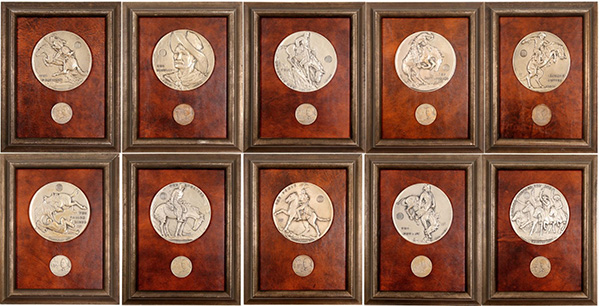
An expected top lot of Day 4 is the rare and complete set of ten framed six-inch medallions for the 21 Club Restaurant in New York City created by Metallic Art Company in 1971 (est. $5,000- $10,000). Each silver-plated copper medallion represents a work by the famous Western sculptor Frederic Remington. The set is mounted on a leather background and housed in a wooden frame.
Color catalogs are available by calling 1-844-492-2766, or 775-851-1859. Also, anyone owning a collection that might fit into an upcoming Holabird Western Americana Collections auction is encouraged to get in touch. The firm travels extensively throughout the U.S., to see and pick up collections. Last year it visited Boston, Florida, Seattle and New York, among other destinations.
Holabird Western Americana Collections is always in the hunt for quality Americana and coin consignments, bottles, advertising and other collections for future auctions. To consign a single piece or a collection, you may call Fred Holabird at 775-851-1859 or 844-492-2766; or, you can send an e-mail to fredholabird@gmail.com. To learn more about Holabird Western Americana Collections and the online-only April 16 th -19 th Big Tent Auction, please visit www.fhwac.com.
To read the earlier E-Sylum article, see:
SELECTIONS FROM HOLABIRD APRIL 2020 SALES (https://www.coinbooks.org/v23/esylum_v23n14a28.html)

STACKS BOWERS APRIL 2020 MEDALS-ONLY SALE
Here's the press release for the upcoming Stack's Bowers medals sale. I added images of selected pieces. Nice material. -Editor
Stack's Bowers Galleries to Offer Exceptional Array of Exonumia in Medals-Only Auction
Stack's Bowers Galleries is excited to present a special April Collectors Choice Online (CCO) auction of over 160 lots of exonumia. These pieces represent three different topics: the works of Jacques Wiener mostly comprising his famous, intricately engraved architectural series; World War I medals from a variety of issuers on each side of the great conflict, and the massive opera of Karl Goetz, ranging from historical to satirical themes.

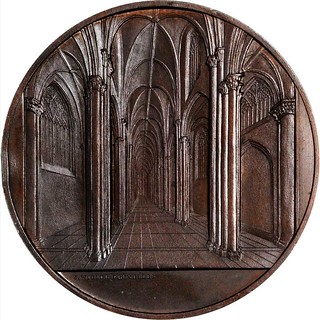
1853 Monastery of Batalha Bronze Medal
Starting off this incredible sale are numerous offerings from the brothers Wiener, led mostly by Jacques. During the mid-19 th century, the Wieners were responsible for some of the most detailed and engaging architectural medals produced, and their craftsmanship makes them popular even today, with many collecting them serially. Highlights of this section include renditions of the Hagia Sophia in Istanbul, St. Isaac's Cathedral in St. Petersburg, and the Cathedral Notre Dame in Strasbourg (graded PCGS SPECIMEN-65).
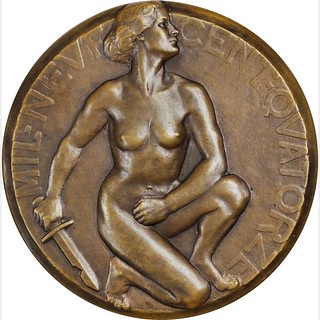
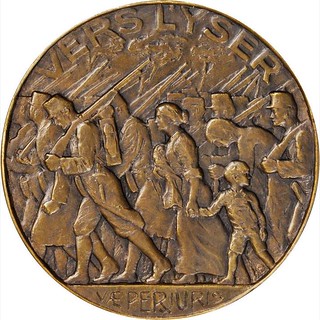
1914 Battle of the Yser Medal
In the World War I section, there are numerous solemn reminders of the battles fought and the lives lost, along with a variety of interesting and unusual images. These include a medal celebrating America as avenger for the lives lost on the Lusitania, a piece reinforcing the "crusade-like" nature of the war effort with a U.S. soldier slaying a dragon while Christ casts his approval, and a well engraved, highly artistic French medal portraying a flying personification of Victory over one of the earliest depictions of a tank in numismatics.
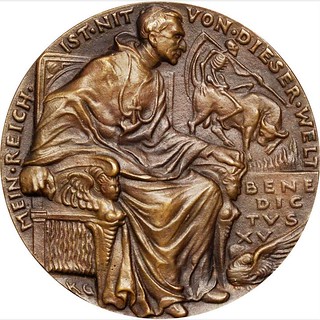
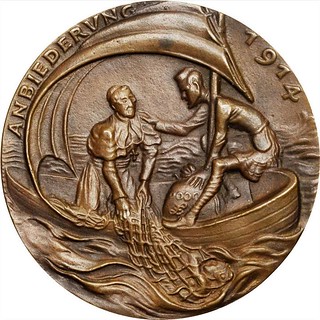
1914 Bribing of Pope Benedict XV Medal
Rounding this sale out is its largest section—an incredibly spectacular selection of the works of famed Munich- based medalist, Karl Goetz. While he is most famous for his satirical issues, his output comprises much more than merely poking fun at contemporary issues. Works such as "Egypt Awakening" and "Germany's Crucifixion" do satirize some of the events during and after World War I. Others are more personal, such as an oval medal commemorating his own marriage—featuring himself and his wife—and still others look at events important to Germany, either culturally or temporally, like the Oberammergau Passion Play and the XI Olympiad held in Munich in 1936.
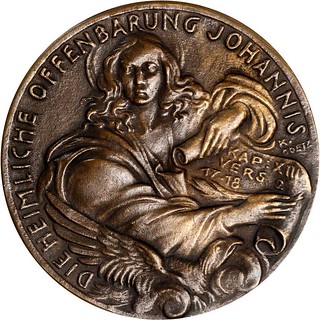
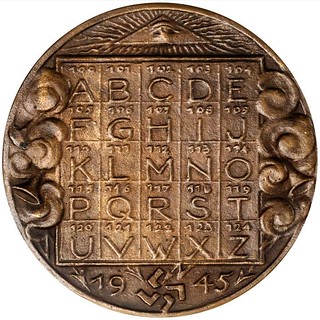
1945 Revelations of John the Evangelist Medal
One of the more unusual and moving medals, however, is from late in Goetz's series. The "Revelations of John the Evangelist" alludes to a passage in the Book of Revelations, whereby the anti-Christ can be seen through the number 666. On the reverse of the medal, Goetz presents an alphabet table, assigning a number to each letter. It can't be lost upon anyone that this medal, dating to 1945, achieves the "number of the beast" when adding those assigned to the letters which spell ‘Hitler,' an obvious play by Goetz to portray contemporary sentiments toward the end of World War II.
The Stack's Bowers Galleries April 2020 Medals Only Collectors Choice Online auction is available for viewing and bidding at StacksBowers.com. For more information, contact the firm at 800-458-4646 or Info@StacksBowers.com.
To read the complete article, see:
The April 2020 World Collectors Choice Online Auction - A Special Selection of World War I, Goetz and Cathedral Medals - Lots 30001-30161
(https://auctions.stacksbowers.com/auctions/3-MM8MX/the-april-2020-world-collectors-choice-online-auction-a-special-selection-of-world-war-i-goetz-and-cathedral-medals-lots-30001-30161)
HERITAGE APRIL 2020 CURRENCY SALE SELECTIONS
Here are some notes that caught my eye in the upcoming Heritage currency auction. -Editor
Lot 22002: 1861 Confederate $500 Montgomery T2
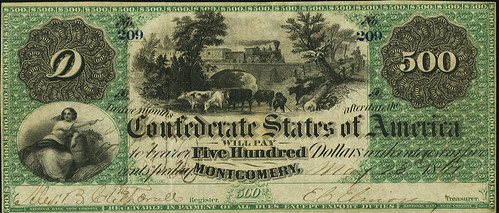
Manuscript Endorsement "A.J. Guirot" T2 $500 1861 Cr. 2 PCGS Extremely Fine 40.
This $500 note was part of the very first emission of Treasury Notes by the Confederacy. A total of 607 $500 notes were issued between April 8, 1861 (four days before hostilities
actually began) and July 23, 1861. The notes were part of a deal brokered by Gazaway Bugg Lamar and ABNCo, with the Treasury Note part of a larger order being subcontracted to
National Bank Note Company by ABNCo due to the press of time. This order was placed shortly after the March 9th authorization by the Confederate Congress for the issuance of
Treasury Notes, with the first order of 607 sheets of $1000-$500-$100-$50 notes being received in Montgomery on April 2, 1861, ten days before the commencement of hostilities.
While another 1000 sheets of $100-$50 were printed and barely escaped confiscation by Federal authorities in late April, 1861, no additional $1000s or $500s were printed. The $500
necessarily used pre-war vignettes of Ceres and a train crossing a bridge with cattle being driven in the foreground entitled The Crossing engraved by James Smillie. The note
exhibits excellent color and paper quality with many of the attributes of an even higher graded note. The back has a manuscript issue endorsement of A. J. Guirot, Assistant
Treasurer of the Confederate States of America.
This note traces its ownership to Lewis C. Gehring of Brooklyn, a prominent banker and treasurer of Prudential Savings Bank of Brooklyn. Gehring consigned the note to the famous Thomas Elder's August 26, 1921 auction in New York, where it was graded "uncirculated" and sold for a whopping $56, a record for any $500 Montgomery from 1865 to 1941. Elder sold the note again May 12, 1939, where it was described as "uncirculated, perfection, clean note, a gem." The note likely was purchased by dealer Charles Wormser of New York, son of the founder of New Netherlands Coin Co., who in turn sold it to his protégé John J. Ford in 1957. Ford held onto this note until he began the massive liquidation of his entire numismatic collection in 2003.
This superlative mid-grade example without any condition distractions will be a key part of any Confederate collection fortunate enough to add it. Originally auctioned in 1921 by Thomas Elder as part of the Lewis C. Gehring collection, this note went on to spend time in the John J. Ford Collection and is one of the best condition examples known. Selections From the J. Wayne Hilton Confederate Currency Collection
The 1861 Montgomery notes are a key to the series, and true "history in your hands" pieces directly connected to the start of the Civil War. -Editor
To read the complete lot description, see:
Manuscript Endorsement
"A.J. Guirot" T2 $500 1861 Cr. 2 PCGS Extremely Fine 40.. ...
(https://currency.ha.com/itm/confederate-notes/1861-issues/manuscript-endorsement-aj-guirot-t2-500-1861-cr-2-pcgs-extremely-fine-40/a/3577-22002.s)
Lot 22010: 1861 Confederate $10 T22
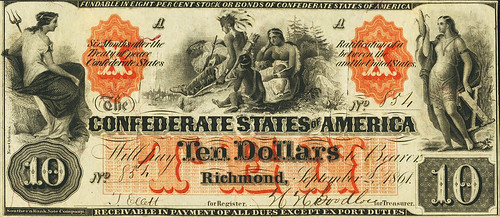
T22 $10 1861 Cr. 150 PCGS Very Choice New 64PPQ, CC.
A dark orange overprint adorns this handsome cross-cut cancelled $10. This note was cancelled early in its life which kept it from circulating. It was able to stay as pristine as
possible and a delight for generations of collectors through the years. This is the highest graded T22 and the only Uncirculated piece to be cancelled that we have ever offered.
The two cut cancellations do not impair any major design features, therefore leaving a highly collectable T22. For comparison purposes, we had an uncancelled Cr. 150 grading PCGS
New 62 realize $19,200 at our FUN 2020 auction. This cancelled, yet higher graded example, should finish well. Selections From the J. Wayne Hilton Confederate Currency
Collection
Beautiful high grade piece. -Editor
To read the complete lot description, see:
T22 $10 1861 Cr. 150 PCGS Very Choice New
64PPQ, CC.. ... (https://currency.ha.com/itm/confederate-notes/1861-issues/t22-10-1861-cr-150-pcgs-very-choice-new-64ppq-cc/a/3577-22010.s)
Lot 22023: 1861 $10 Demand Note
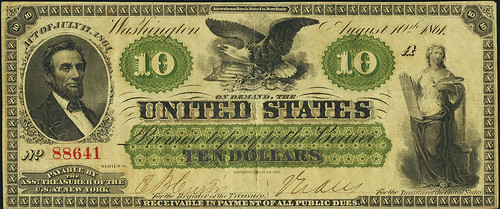
Fr. 6 $10 1861 Demand Note PMG Very Fine 30.
Demand Notes were important instruments in financing the Union's Civil War budget. A shortage of coin during war time put further strains on circulating paper currency. These
notes circulated heavily until Legal Tender could help alleviate currency needs. As a result, few Demand Notes are known in grades above Very Fine, most of them $5s. That
statement is especially true for this Friedberg number as none are reported above the Very Fine 35 level. The example we are offering tonight is one of the finer known survivors
whose only flaw is a slight tear along the top margin as mentioned on the PMG holder. Otherwise, both hand-signed signatures are strong, the colors are incredible, and the note is
far better margined than most Demand Notes. The PMG Choice Very Fine 35 example referenced above brought $28,800 in our 2019 Central States auction.
Important note in U.S. financial history. -Editor
To read the complete lot description, see:
Fr. 6 $10 1861 Demand Note PMG Very Fine 30.. ...
(https://currency.ha.com/itm/large-size/demand-notes/fr-6-10-1861-demand-note-pmg-very-fine-30/a/3577-22023.s)
Lot 22046: 1864 $10 Compound Interest Treasury Note
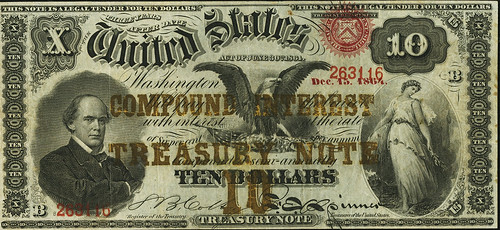
Fr. 190b $10 1864 Compound Interest Treasury Note PMG Very Fine 30.
A well margined example of this challenging "middle of the book" note that has a small tear at the edge. Overall, this piece retains excellent ink colors and is well on
the positive side of the mid grade for the type. The bronzing has remained reasonably bright with no traces at all of the nearly ubiquitous green corrosion. A nice note that a
collector can take pride in without emptying his bank account.
Very nice piece (ignore my careless cropping -see the complete images online). -Editor
To read the complete lot description, see:
Fr. 190b $10 1864
Compound Interest Treasury Note PMG Very Fine 30.. ...
(https://currency.ha.com/itm/large-size/compound-interest-treasury-notes/fr-190b-10-1864-compound-interest-treasury-note-pmg-very-fine-30/a/3577-22046.s)
Lot 22277: 1720 Louisiana 10 Livres
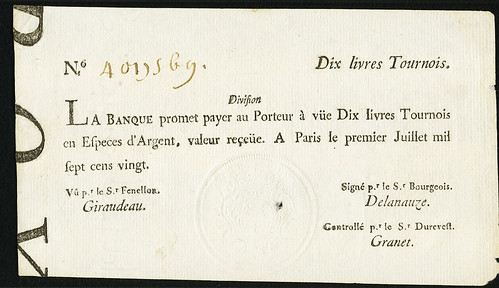
Louisiana July 1, 1720 10 Livres Tournois PMG About Uncirculated 55.
It has been over five years since we last offered a note from French Colonial Louisiana. This note was printed in France and issued by the Bank Royale in New Orleans. These notes
were part of the famed "Mississippi Bubble" debacle involving Scottish financier/schemer John Law and land in New France. The latest Newman on page 158 values it at $750
in VF. A few small tears affect nothing.
Important financial history. -Editor
To read the complete lot description, see:
Louisiana July 1, 1720 10 Livres
Tournois PMG About Uncirculated 55.. .
(https://currency.ha.com/itm/colonial-notes/georgia/louisiana-july-1-1720-10-livres-tournois-pmg-about-uncirculated-55/a/3577-22277.s)
Lot 22429: Confederate Hotel 25¢ Scrip

New Iberia, LA- Confederate Hotel 25¢ Sep. 26, 1862 PCGS Apparent Fine 12
Printed on thick green rag paper with the imprint of "L.T. Burnett, Printer," the title is at the top and obligations across the center, with the engraved city and date.
The left end floral pattern encloses the cartouche showing "25 CENTS." At the right end, the floral pattern edge matches the left. A red protector "25 Cts." is
at center. Burnett did much printing in the area at this time, and the similarity of his style and vignettes can be seen on different issues. Noted with "Edge and Internal
Tears; Minor Stains."
Civil war scrip is a wide collecting field. Notes payable in Confederate Notes are especially interesting, and it's cool that the issuing establishment was named The Confederate Hotel. Neat piece. -Editor
To read the complete lot description, see:
New Iberia, LA- Confederate
Hotel 25¢ Sep. 26, 1862 PCGS Apparent Fine 12.. ...
(https://currency.ha.com/itm/obsoletes-by-state/louisiana/new-iberia-la-confederate-hotel-25-sep-26-1862-pcgs-apparent-fine-12/a/3577-22429.s)

30 PIECES OF SILVER
David Pickup submitted these thoughts on the coins of Jesus' betrayal. -Editor
30 pieces of silver – how much is a man worth?
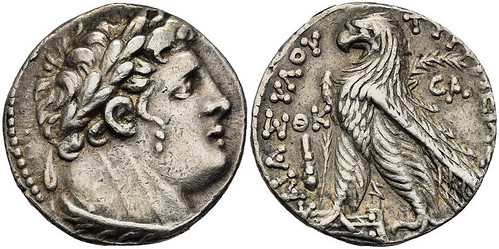
Tyre, |Phoenicia|, 98 - 97 B.C.
Thirty pieces of silver was the price for which Judas Iscariot betrayed Jesus, according to an account in the Gospel of Matthew 26:15. . The religious authorities were desperate to get rid of Jesus. They found an opportunity when one of His followers offered to betray Him.
There has been a lot of discussion about what coin was used. Suggestions include, tetradrachms of Rhodes, Jewish shekels of First Revolt, Jewish coins of 138 BC and Roman denarii. The most widely accepted one is the Tyrian shekel. It was well regarded because it had a high bullion content. Roman coinage was only about 80% silver, Tyrian shekels were required to pay the temple tax in Jerusalem. The money changers referred to in clearing the Temple story would have exchanged local currency for Tyrian shekels.
How much was 30 pieces of silver? Again there is some discussion. One writer in the 1980s said a shekel was worth about £4 to £5. If a shekel was four denarii then thirty shekels was a working's man wages for one hundred and twenty days. (Based on a story about hiring vineyard workers).
Another suggestion goes back an Old Testament use of the phrase 30 pieces of silver as the value of a slave. The prophet Zechariah asked what his advice was worth and he was told it was worth the price of a slave which was him told, then. The fact that Judas' cash was later used to buy a patch of ground that was only useful as a burial place for criminals shows it was not worth much.
Jacob, Kenneth, (1985) Coins and Christianity, London: B A Seaby Ltd second edition
Plant Rev Richard, (2007) A Numismatic Journey through the Bible, London: Rotographic
Image from this Forvm Ancient Coins page:
Tyre,
|Phoenicia|, 98 - 97 B.C., Judas' 30 Pieces of Silver
SILVER PENNY OF EDWARD THE MARTYR
Dix Noonan Webb published this press release about a rare medieval penny recently uncovered by a detectorist. It is being offered as Lot 128 in their upcoming sale. -Editor


An extremely rare Silver penny of the boy king Edward the Martyr - the teenager who ruled Saxon Britain in the 10th century – has been found on the Isle of Wight and is estimated to fetch £5,000-7,000 when it is sold in an online/live auction at Dix Noonan Webb, the international coins, medals, banknotes and jewellery specialists in their sale of Coins on Wednesday, April 22, 2020 at 10am on their website www.DNW.co.uk.
It was discovered in March 2018 by a 68-year-old retired council worker using a Minelab E- Trac metal detector. After metal detecting for 28 years, the detectorist, who wishes to remain anonymous, was on a ploughed field with his local detecting club. Frustrated at only finding three .22 lead bullets in one spot, and ready to give up for the day he then got another signal in the same area and dug down 4-5 inches to uncover the Saxon penny.
The coin is in remarkable condition, and has a fine portrait of the boy king wearing a diadem and facing left. Around is the legend "EDPEARD REX ANGLORX ". (Edward king of the English). On the reverse is a small cross pattee in the centre with the legend around "AELSTAN M'O CANT". (Aelfstan moneyer of Canterbury).
There were thirty nine mints operating around the country at this time with three moneyers working at Canterbury. Edward only ruled briefly, between the years 975-978 A.D. and was only 13 years old when he was crowned king after the death of his father Eadgar. Edward was assassinated on March 18 at the Saxon hall where Corfe Castle in Dorset, now stands, by supporters of his half brother Aethelred.
Edward became venerated as a Saint and Martyr and his bones were exhumed and taken to a shrine at Shaftesbury Abbey in 1001. The shrine was lost during the dissolution of the Monasteries in the 16th century, but his bones were rediscovered in 1931 and now reside at a shrine in the Russian Orthodox Church in Brookwood, Surrey. The coin is recorded under the PAS BERK-D58801. EMC 2019. 0338
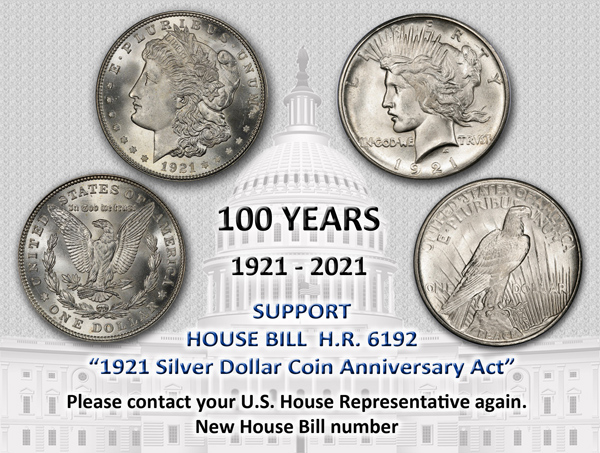
COINS AND HEALTH
David Pickup submitted another piece on coins and health. Thanks. Spoiler: don't eat them! -Editor
Coins and your Health – Crime does not Always Pay!
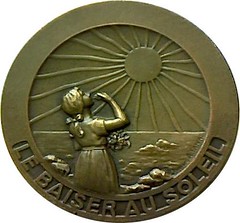 Counterfeiting in the Nineteenth Century was a serious problem but also something of a cottage industry. Coins were often faked on a small scale in homes and couples
carried on a profitable trade. However coins are small and when the police got involved the temptation was to swallow the evidence.
Counterfeiting in the Nineteenth Century was a serious problem but also something of a cottage industry. Coins were often faked on a small scale in homes and couples
carried on a profitable trade. However coins are small and when the police got involved the temptation was to swallow the evidence.
On 29th September 1861 Lloyd's Illustrated Newspaper reported on Alfred and Mary Parr charged with possession of counterfeit coin. Mrs. Parr aged 28 had paid 2/6d for something costing 6d. The shop worker was suspicious and the police were called. When the police arrived she threw herself to the ground and swallowed the bad coin.
Her home was searched and nine fake halfcrowns were found and three bad half sovereigns. Alfred was found not guilty as he said the parcel of bad coins belonged to his wife and he knew nothing about them (A likely story!) Mary was sentenced to two year's imprisonment. The court was told she previously been charged with similar offences and several times had swallowed the evidence. The man had lived on her profits gained from passing bad coins.
1st August 1874 the Edinburgh Evening News reported that a gang of four men and a woman had been in court in London and charged with possession of three hundred counterfeit coins. During a struggle with police two of the men had tried to swallow the coins.
On 3rd September 1892 the Derby Daily Telegraph said that Henry Lawrence had bought some bacon with a bad shilling. When challenged he produced two sixpences, one of which was counterfeit. He swallowed both. When his home was raided twenty one shillings were found and a crucible for melting metal. He had previously been sentenced for seven years for possession of a crucible for making counterfeits.
The last story shows that the criminals did not always get away with it. On 8th February 1868 the Birmingham Daily Post told the story of a woman who regularly swallowed coins to hide the evidence from her youth. Unfortunately they corroded in her insides causing epilepsy and she died after two years' painful illness.
The image I added is actually the obverse of a French medal given to tuberculosis survivors. Not sure what the lady is doing or eating. From Numista: https://en.numista.com/forum/topic64928.html . -Editor
To read the earlier E-Sylum article, see:
GERMS AND MONEY (https://www.coinbooks.org/v23/esylum_v23n14a35.html)
2020 MAUNDY CEREMONY CORONAVIRUS CANCELLATION
David Pickup forwarded this Daily Mail article about the cancellation of this year's Maundy coinage ceremony. Thanks! Breaking centuries of tradition, the coins were instead distributed by mail. -Editor
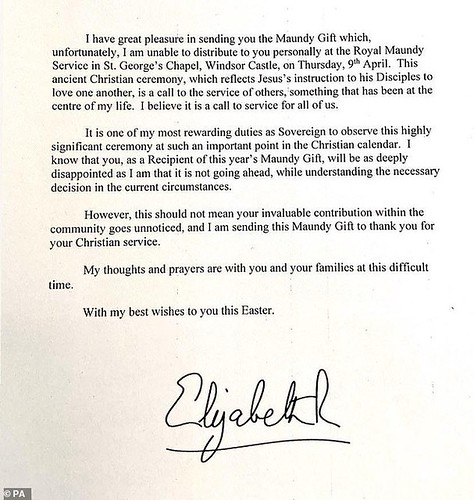
The Queen has been forced to break with centuries of tradition by sending her Maundy money to the elderly by post amid the coronavirus outbreak.
Every year on the day before Good Friday, the Monarch presents elderly members of the Church of England with special 'Maundy' coins.
These specially minted pieces are almost always handed out to worshippers over 70, nominated by local dioceses for their contributions to the church and the community.
 But today they have been delivered by Royal Mail instead of by the Queen herself, who is isolating at Windsor, to protect them all from the deadly virus.
But today they have been delivered by Royal Mail instead of by the Queen herself, who is isolating at Windsor, to protect them all from the deadly virus.
The eldest of this year's 188 recipients is Thomas Brock, from Sunbury-on-Thames, who holds the title of oldest active bellringer in the world.
He began ringing at his local church, St Mary's at the age of just seven and has only ever missed services during the Second World War, when he was a prisoner of war.
The Queen said she was 'deeply disappointed' at not being able to meet the 188 in person.
The monarch has written to those she would have presented with symbolic money during the annual Royal Maundy service.
The tradition stretches back to the 1600s and has been observed every year, even in times of war.
During the Second World War, either the Queen's father King George VI or the Archbishop of Canterbury did the honours.
To read the complete article, see:
Queen breaks with centuries of
tradition to send Maundy money by Royal Mail instead of handing it out personally to this year's 188 recipients including the world's oldest bell-ringer, aged 101
(https://www.dailymail.co.uk/news/article-8204103/Queen-forced-send-Maundy-money-post-Royal-Mail-coronavirus-breaking-tradition.html)
ARUBA WINS IBNS 2019 BANK NOTE OF YEAR
Kavan Ratnatunga forwarded this announcement of the winner of the 2019 Bank Note of Year Award from the International Bank Note Society. Thanks. -Editor
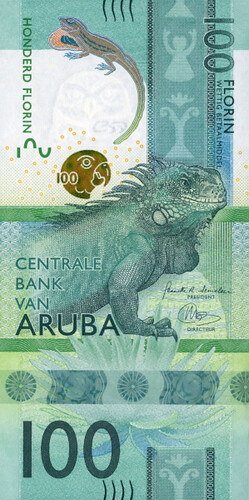
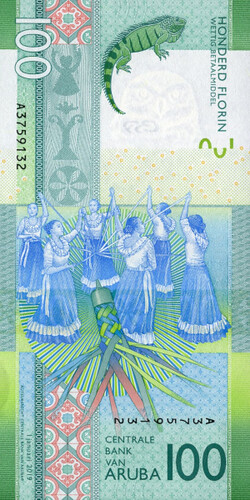
The International Bank Note Society (IBNS) announces that its voting membership has selected the Central Bank of Aruba to receive its annual prestigious "Bank Note of the Year Award" for 2019. With well over 100 new banknotes released worldwide during 2019, only 22 were deemed of sufficiently new design to be member nominated. Almost from the start, Aruba's new 100 Florin bill led the voting followed by an almost virtual tie between Eastern Caribbean States ($10 with multiple motifs), Northern Ireland Ulster Bank (5 Pound flying geese with people on shoreline) and Switzerland (1000 Franc human hands). Norway's 1000 Kroner (large wave breaking design) placed fifth but every banknote nominated received at least some votes.
Now in its 59th year, the IBNS has over 2000 members worldwide. As a nonprofit educational organization its objectives are to promote, stimulate and advance the study, collection and dissemination of information related to paper money. From all significant newly designed and widely circulated banknotes released in 2019, the IBNS membership nominated notes from 22 different countries to place on the ballot. Nominees represented 4 continents (Africa, Asia, Australia and Europe) and 5 island nations, 4 of which are in the Caribbean. Past "Bank Note of the Year" winners include Canada (2018), Switzerland (2017 & 2016), New Zealand (2015), Trinidad & Tobago (2014), Kazakhstan (2013, 2012, 2011), Uganda (2010), Bermuda (2009), Samoa (2008), Bank of Scotland (2007), Comoros (2006), Faeroe Islands (2005) and Canada (2004).
When the Central Bank of Aruba released its new series of 5 banknotes on June 3, 2019, it was the culmination of 7 years of intense preparation and soul searching. This "Stars of Aruba" series was introduced to the small Caribbean Island's 120,000 residents with both humor, public interaction and a mobile application "Aruba su florin". The goal was a complete banknote series redesign, the first in almost 30 years. The result is quite astonishing, including a new vertical format, beautiful artistic elements from Aruban culture, flora and fauna and even a new 200 Florin denomination, which replaced the old 500 Florin. Most striking is one of the most secure banknote features available using high-relief printing, color changing ink and a 3D MOTION SURFACE® moving stripe with miniaturized micro-optics from printer Crane Currency. The unique designs are truly eye catching and effectively balance the challenge of anti-counterfeit technology with production costs. Local schools and citizens were all engaged in this national currency transition.
As a first-time entrant into the IBNS Bank Note of the Year competition, Aruba's award winning success may provide a template for other countries to consider in designing and promoting new banknotes. The new Aruba successful design in emerald green features an iguana on the face and dancing women with ribbons on the green and blue reverse. The 100 Florin note is longer than a 20 Euro note and slightly wider but shorter than U.S. greenbacks. The current exchange value of 100 Florin is USD $57 on the date of this announcement.
Look at the following links for more information about
• The 2019 series of banknotes for Aruba
• Interview with Mrs. Jane Semeleer (Centrale Bank van Aruba President)
• "Aruba su Florin" on the App Store
• "Aruba su Florin" on Google Play
For more information on the International Bank Note Society, see:
https://www.theibns.org/
BAR PAYS EMPLOYEES WITH SOUVENIR BANKNOTES
Len Augsburger passed along this CNN piece about a Georgia tourist bar that turned the souvenir banknotes stapled to their walls and ceiling into a payday for their out-of-work employees. Thanks. -Editor
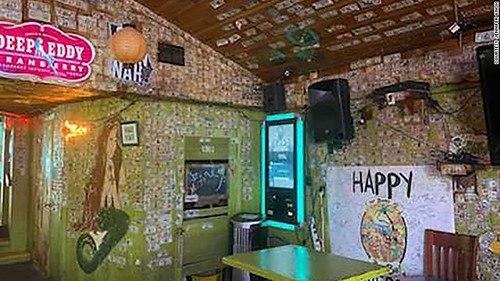
Before the coronavirus pandemic, Jennifer Knox would walk into her bar and soak in the sounds of people chatting while sipping on their drinks and listening to local musicians strum along on their guitars.
Now, her restaurant, The Sand Bar -- located in Tybee Island, Georgia -- is quiet, with no customers or employees in site. Like many other restaurants, The Sand Bar had to close its doors after officials put stay-at-home orders in place and mandated restaurants switch to takeout and delivery only. The restrictions, put in place to help control the spread of the virus, also left businesses -- including Knox's -- struggling financially.
As she sat in her empty bar at the end of March and looked around, she realized there was an opportunity to help her now unemployed staff. "We were sitting there doors locked and I'm like oh my gosh, 'there's money on the walls and we have time on our hands," she told CNN, referring to the bar's decor. "'We gotta get this money down.'"
For nearly 15 years, patrons have been leaving their mark on the island bar by writing on a dollar bill and stapling it on the walls and ceilings. Knox just celebrated her six-year anniversary of owning the bar.
Over the next three and a half days, five volunteers took on the tedious task to help gently take down the weathered money. Some bills had dozens of staples in them, according to Knox. Some of the currency came from countries across the globe.
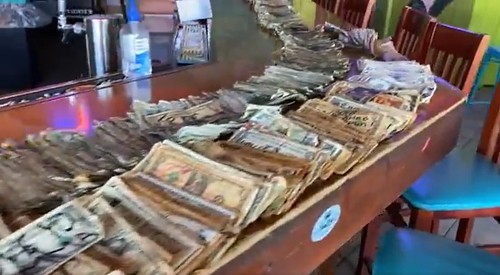
After the bills were taken down, it took about a week and a half to clean them off and get them counted. In total, $3,714 were collected and the stacks of bills stretched in piles across the entire bar counter top.
After hearing about Knox's act of giving back, several customers donated to the cause. In total, Knox was able to distribute $4,104 to her staff. Four bartenders and two musicians each were given $600, she said.
When patrons do return to have a cold beverage after relaxing on the beach, they'll notice a fresh coat of bright colored paint replaced the wallpaper of dollar bills.
These would make nice numismatic coronavirus souvenirs. I'd encourage the employees to put some of the more interesting notes up for sale on eBay; maybe additional cash could be raised. -Editor
To read the complete article, see:
https://www.cnn.com/2020/04/08/us/sand-bar-dollar-bills-donation-trnd/index.html
(https://www.cnn.com/2020/04/08/us/sand-bar-dollar-bills-donation-trnd/index.html)
TIMOTHY MILLETT CARDS SITE LAUNCHED
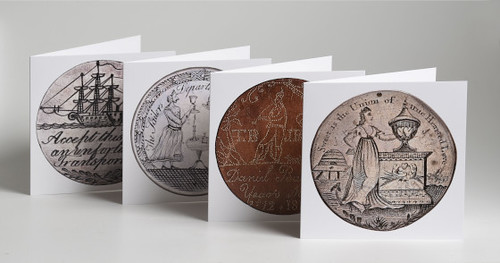
Timothy Millett writes:
"Recently I have been selecting many of my favourite images from my business with a view to developing a range of Greetings Cards. As I have now put together well over one hundred designs, I have realised that this is not suitable as just another section on my current stock website. As a result we have been building an independent site devoted to the cards which I am launching now.
Please have a look to see what you think. Equally I have very happy to receive constructive criticism. If it helps the running of the site I would welcome it.
I look forward to hearing from you."
I've featured some of Timothy Millett's card designs before and I agree it's high time for a separate e-commerce site. Check out his inventory of great coin/medal/token-themed cards. These are nice products and I wouldn't mind seeing other dealers and clubs offering something similar. High-resolution digital photography can put great images of amazing numismatic artwork into the hands of collectors and non-collectors alike. -Editor


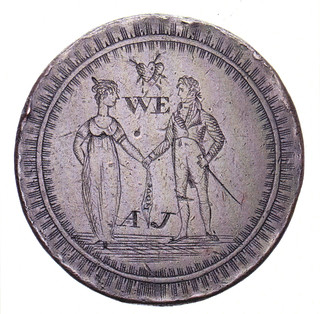

To visit the Timothy Millett Cards website, see:
https://tcmcards.com/
MILLENNIALS AND STAMP COLLECTING
"Millennials have fallen in love with stamp collecting" according to this April 11, 2020 article in The Guardian. -Editor
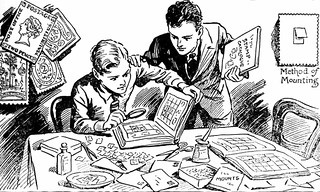 It was once a byword for boring, but it seems stamp collecting is finding a new – young – audience, despite the fact that some hobbyists have never actually posted a
letter.
It was once a byword for boring, but it seems stamp collecting is finding a new – young – audience, despite the fact that some hobbyists have never actually posted a
letter.
Philately is gaining popularity among millennials, many of whom see the creative pursuit as an escape from their screen-based lives, says 37-year-old Suzanne Rae, from North Yorkshire.
"Philately is tangible: it's relaxing and unplugged. It's also very Instagrammable," says Rae, who is only the second female chairman the Philatelic Traders Society has had in its 91-year history. "Twitter and Instagram enable young collectors to find people like them, and see that it's not only a geeky old man's pursuit."
Rae gave up her job as a management consultant two years ago to make her hobby her businessby starting an online stamp shop, Art Stamped. "We were one of the first stamp businesses using social media," she says.."
Nicholas Challinor-Halford, business manager at stamp auctioneer Harmers of London, believes that part of the millennial boom is the result of romantic notions of pre-digital life. "For Generation Y… [stamp] collecting is escapism with a nostalgic slant, giving collectors a physical link with the past."
One of the highlights of the stamp collectors' calendar is the Stampex show, held at the Business Design Centre in Islington, north London every autumn. "There are lots of younger people there," says Rae. "It's not fuddy duddy; it's engaging. You can … spend a lot of money but it's a hobby you can enjoy inexpensively too."
Numismatics is very Instagrammable as well - I'd argue even more so than stamps. Coins and medals are miniature sculptures. For most of us, all it took was one look at an interesting or unusual numismatic item and we were hooked - love at first sight. Pushing more great numismatic images out to social media is what our hobby should be doing more of, particularly in these times when more people are spending more of their time online. -Editor
To read the complete article, see:
Post modern: why millennials have fallen in
love with stamp collecting (https://www.theguardian.com/artanddesign/2020/apr/11/post-modern-why-millennials-have-fallen-in-love-with-stamp-collecting)

